Review of Motorola MOTO U9: perfect lines
After it recently enlarged the RAZR line with the MOTORAZR2 V8, V9 and V9m, the company Motorola decided to fix its attention on the interesting, but not so popular PEBL series.Table of contents:
- Design
- Main menu
- Phone book
- Messages
- Calendar
- Tasks
- Notes
- Calculator
- Alarm clock
- World time
- Internet
- Download manager
- Games and application
- Media finder, player
- Video player
- Voice recorder
- Pictures
- File manager
- Camera
- Video camera
- Connections
- Bluetooth
- Synchronization
- Settings
- Talking phone
- Calls
- Conclusion
Under the moment this series can boast only with one device (we don’t take into account the recently updated U3) available in different colour schemes. The Motorola PEBL U6 hasn’t hit the jackpot as the RAZR, but its customers valued this phone most of all for the unique and well thought-out design. The phone, that we check out today, is obviously the descendant of the U6, though the model lacks “PEBL” abbreviation.
The possible reason is that the MOTO U9 can be also referred to the ROKR music series. This solution has a handy and original player as well as the high-quality sound. Though let’s follow the plan.
Design

The MOTO U9 design seems to be the very logical development of the ideas laid in the PEBL U9. The phone has kept the main feature of its ancestor – the form-factor and the compact curvaceous casing; and here the similarity ends. The front panel is made of the quality glassy plastic. Depending on the light the casing colour varies from black to grayish. The device looks seamless, the only seam goes on the end.




The top part of the casing households the lens of the 2Mpix camera protected with a glass from the external stress. The camera lens is on the same level with the casing, so you risks to scratch it.
Beneath the camera you find a small diode lightning in blue when the Bluetooth is working. On the bottom you see the vendor logo surrounded by two semicircular recesses; its colour doesn’t stand out of the casing colour. The logo hides a grille, which protects from the dirty inside the phone. The recesses and the grille are not functional (the main loudspeaker locates on the rare face of the handset), but still they successfully match the phone design.







When looking at the powered off MOTO U9, you unwillingly realize a kind of incompleteness: the front panel is blank featuring only two elements. In reality, the free space is occupied by the internal 1.45’’ display, which is imperceptible with the backlight turned off. This screen is the main merit of the U9. Together with the touch sensitive navigational keys controlling the player it turns the phone into very significant music solution. The display backlight isn’t very bright (as the front panel is made of the rather thick plastic), but still it is convenient; the display darkens a little in the sunlight. The OLED matrix has 120x160 pixels resolution depicting 65K colours. The display provides a good colour rendering, but still does worse than TFT-matrixes because of some technology characteristics. One of the main advantages of the screen is dreadfully big viewing angles: a picture isn’t affected by the darkening or inverting regardless the position you look from.





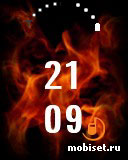
The rare face and edges have the Soft Touch finishing that is inherent to many Motorola devices. The sides of the U9 household additional volume rocker keys, dedicated voice recorder and camera keys. The latter is also in charge of the blocking the touch sensitive keys when the phone is closed. The travel distance of the side buttons is quite big, they are convenient in use. Upside, the flip-phone joint features the stripe hole.














The bottom part of the casing households the Micro USB port. It is covered with the plastic plug, which sometimes is difficult to open. The plug has a sturdy fixation, you can hardly lose it. The MicroUSB standard has recently appeared, however more and more vendors give up MiniUSD in favor of MicroUSB, as the port features the smaller size. The MOTO U9 also can plug here either the charger or the music headset (the stereo phones with a cable) or a cable for synchronization. The headphones have been specially renewed for this model. The headset included in the sale package looks very spiffy, besides it provides good sound quality. It can be compared with the Nokia and Sony Ericsson headsets. For the first time these headphones appeared in theMOTORAZR2. The future sees the most of Motorola devices, that household the MicroUSB slot, equipped with this headset. The device is loud enough to play back music in very nosy places. The long wire allows to keep the phone in the trousers’ pocket. The vendor didn’t supply it with a clip, but it is a minor niggle, as the headset is very light and doesn’t pull down the ears. The headphones are rather small, they are very handy especially when comparing them with previous headsets of this vendor (which are far from convenient). The receive/reject button locating on the block with a microphone has no visible edges; the key is marked with a special pictogram. The travel distance and button softness are handy and beyond complaints.
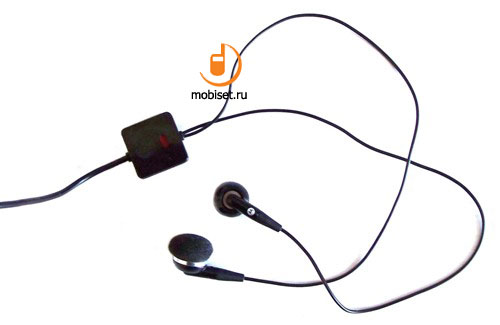
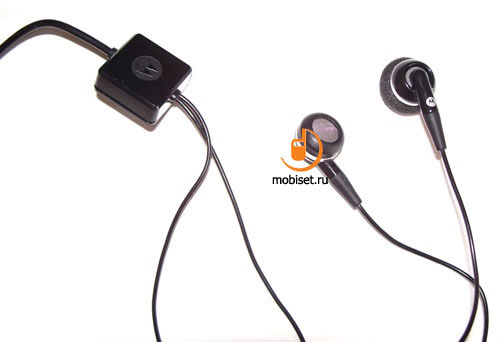


The most part of the rare face is occupied by the battery cover. It fits the casing very hermetically, there are no squeaks and creaks. Beneath the cover you find the loudspeaker’s hole protected from the dirty with the slender grille. On its sides the loudspeaker has two small juts. They don’t let the loudspeaker be closed if you put the phone on the table, i.e. the sound doesn’t get softer.






The cover hides the 750 mAh BX40 battery, which in its turn covers the SIM-card and memory card slots. The SIM-card has a handy fixation: it is easy both to pull it in and out. The MicroSD memory card slot is convenient as well: to pull out the card you should lift the rubberized “tab” and move the flash card upon yourself. The maximum memory card is 4GB one, the hot swap isn’t supported.




The main screen of the device becomes visible when you open the handset. The diagonal is not big, especially in comparison with the phone size, and amounts only to 2.0 inches with 320x240 res. As usual, Motorola provides its QVGA-displays with a high-quality sensor. All colours (the phone is to show up to 262K colours) are bright and natural. The viewing angles are smaller than the external display has, but the matrix almost doesn’t darken in the sunlight.


Above the screen you notice the vendor logo hidden under the safety plastic covering almost all internal panel of the flip-phone. The metal logo is engraved with thin lines, that’s way it opalizes a little in the sunlight. Above the logo you see two cuts of the loudspeaker covered with a protecting grille. The slope above the cuts resembles the one that the RAZR2 has.


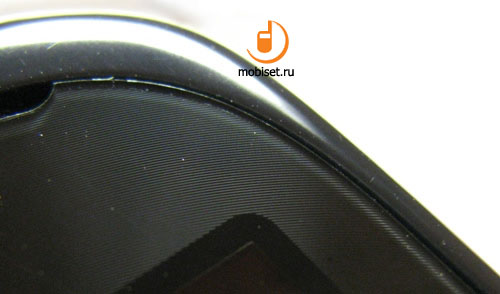
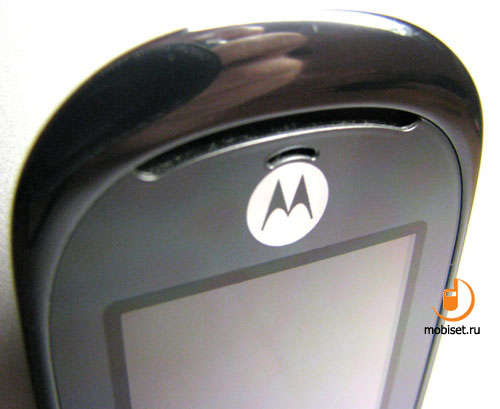
Under the screen you find the joint of the flip-phone. In my opinion, this solution is very disputable in the U9 design, but still it looks sturdy, there is no gap between the halves of the phone. The other half of the phone is almost all occupied by the keypad. It is made of the high-quality plastic and handy in use. The travel distance is convenient, much better than one the Z8’s keypad has. All buttons are divided with plastic stripes. The softkeys, navigational key, call send and end buttons and “5” key are textured. The whole panel is engraved with concentric circles starting from the “OK” key. That’s way the keypad opalizes in the light and prevents finger slips. The even backlight is of the nice white colour. Beneath the keypad the phone has a rubberized stop softening the stroke when the phone closes.
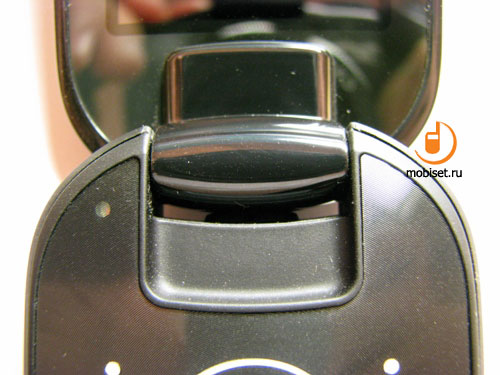
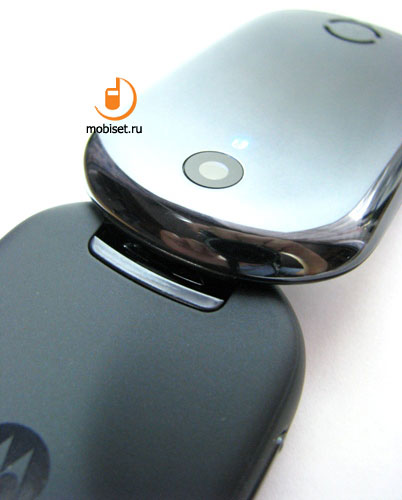
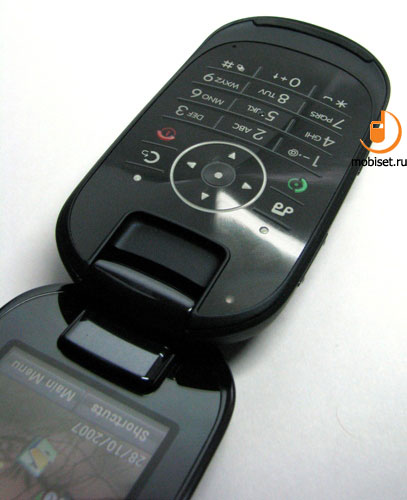


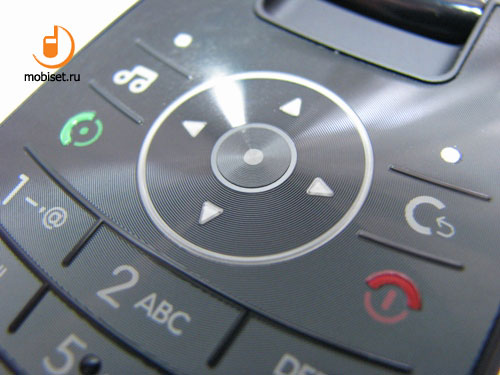
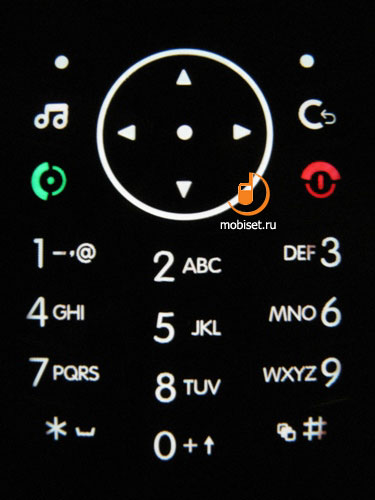
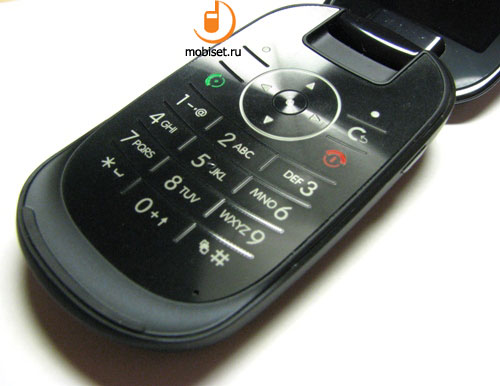
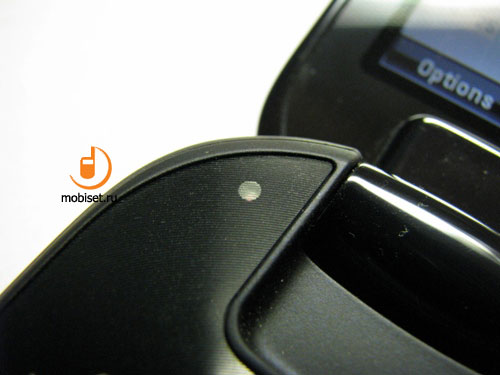
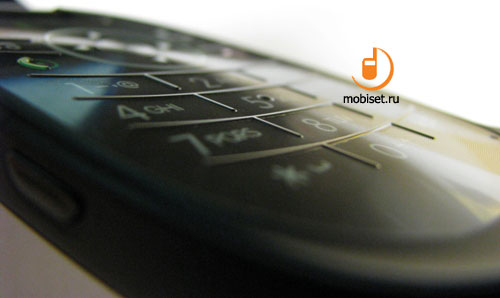
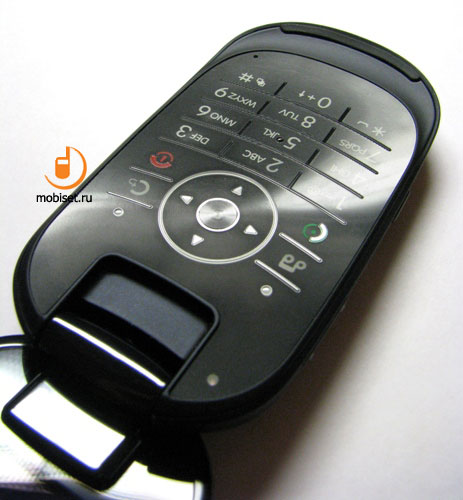
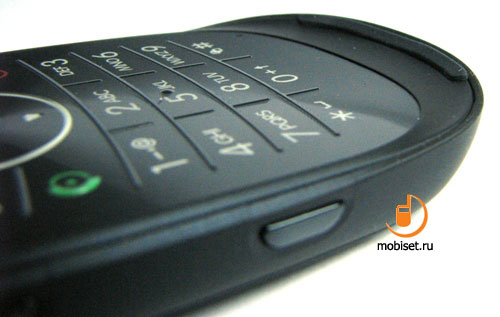
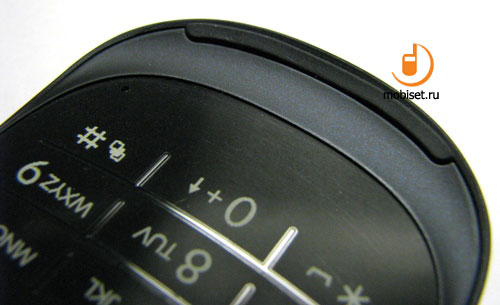
In contrast to the PEBL, the MOTO U9 almost doesn’t utilize metal, it is replaced with plastic including the front panel of the flip-phone (the U6’s panel has here Soft Touch finishing). That’s way the front panel is very soiled. The finger prints are not very perceptible, but still you have sometimes to wipe the device. Another shortcoming is that, in spite of the high-quality plastic, the handset sometimes attracts scratches, when you are not careful. The build quality is very high.

The U9 design turns to be interesting. One of the reasons is that the PEBL remains to be an alternative to the RAZR in the line of the brand products. The design of the phones of this line is uncommon and hasn’t still tired. The other advantages of the flip-phone are the “imperceptible” touch screen with the touch sensitive keys. Thanks to it the vendor managed to preserve the mysterious aura used when promoting the U6 (do you remember “mototalisman”). The U9 is likely to attract many female customers, but we can’t take it as the female solution only. The phone is announced in two colour schemes – black and red. The device measure 90x48.6x16.4mm with the weight 87.5g only. The hardware differences between the U9 and V8 are insignificant. The phone has still run the Freescale MXC275-30. The CPU performance (ARM1136JF-S) is 500MHz, which provides for the quick work of the UI and preinstalled apps. The MOTO U9 operating system is the evolution of the V8 one.
Whereas the RAZR2 runs Linux-Java 6.1 (that was renamed into MOTOMAGX), the U9 ships with the 6.3 version of the software. The main changes has concerned a browser (now instead of Opera 8.5 the phone utilizes the proper browser Motorola Symphony 1.1.0), image viewer, player, quick search in the phone book and support to several networks. But the most glaring difference of the U9 from the previous Linux-based phones is in the new menu, which we are ready to check out.
Main menu
In the standby mode the display shows time, date and the current provider. The top part of the display households the status bar with signs informing about signal receive level, battery charge level, call profile and other settings. Some of the icons stay in the corners whatever application you start up. The four joystick declines can be bound with any application, the tabs of the apps are displayed in the middle of the screen. This function is adjusted in the context menu, the latter can be opened when pressing the left soft-key. Besides, this menu gives the shortcut to the main functions of the phone such us setting alarm clock, changing alert style or creating a message.
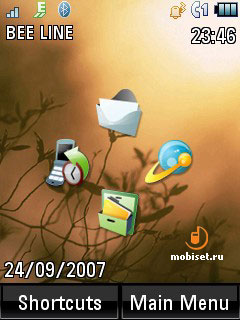
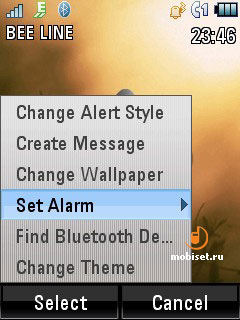
The MOTO U9 is the first phone of the company, which features the new “spinner” view. In this mode the center of the display is occupied by the maximized icon of the chosen application and five small icons of the following applications are beneath.
To navigate through the menu you mainly decline the navigational key sideways; actions are accompanied with the animation. The latter creates the impression that the bigger icons locate on the spinning disk (that’s way it is named “spinner”). The similar navigational system was utilized in the phones of other vendors, however the Motorola’s solutions looks new and interesting. Now you are unable to create new folders in the menu, but you can resort all the icons.
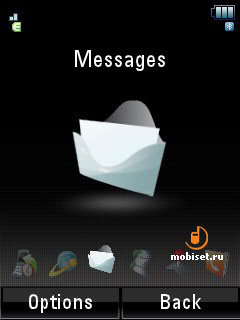
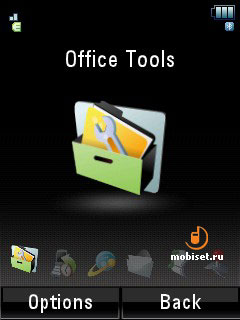
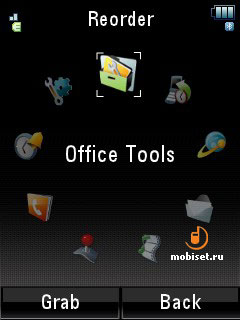
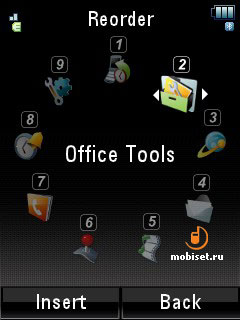

Besides the “spinner” the main menu may be viewed as a 3x3 grid or a list. In the first case the selected icon becomes bigger and brighter than the rest, its name appears above, beneath – a kind of a shade. The vendor managed to avoid abbreviations (they only shortened the word “multimedia”; when you select this icon, there appears the running line with the whole word). When the menu is viewed as a list, the type of the selected line is much bigger than the rest, near it you see an icon. All menu items are numbered, this allows to use the digit strings when navigating.
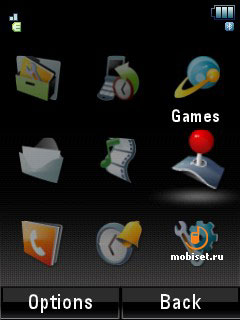
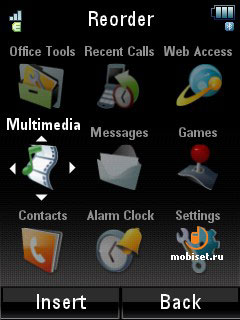
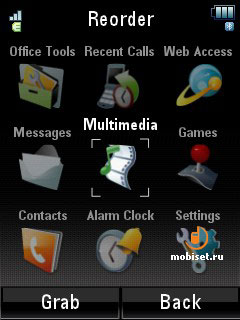
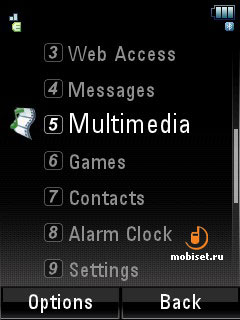
Phone book
Depending on the settings the contacts are called up as a common list or a list with contacts’ photos. The main difference from the V8’s phone book is in the way the contacts are saved. If earlier you were enabled to choose where to save a contact – SIM-card or the phone memory, the U9 saves all contacts in the phone memory, but doubles it in the SIM-card. If a contact has the number in both the phone memory and the SIM-card, the list shows only the latest (unless the mode to view the contacts on the SIM-card is switched on), i.e. there is no odd line in the list. On the one hand, it is handy to those people who frequently change phones (there is unnecessary to copy the phone book), on the other hand, far from all contacts can be saved on the SIM-card. But the problem is rather minor, as you can always reject saving a contact on the SIM-card.
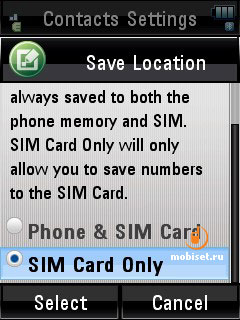
The phone book may be sorted by the frequency, e-mail, and categories. By default there are 3 categories – family, friends and work, but you can create your own categories. There is a quick search through the phone book, to start it enter the first letters of a name. But to do it you can even not to open the phone book, you should just start entering a name on the home screen in the standby mode and the handset offers all the suitable contacts. The contacts may be sent via Bluetooth or in the messages, copied from the SIM-card in the main memory or deleted. We liked the function allowing to change a contact number before a call (it can be useful for those, who uses the IP-telephony cards).

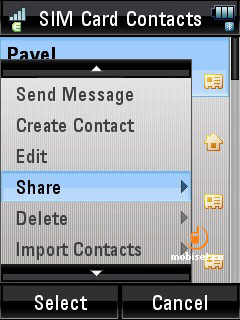
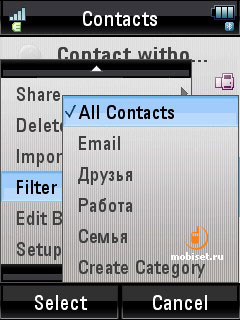
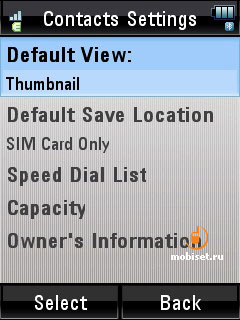
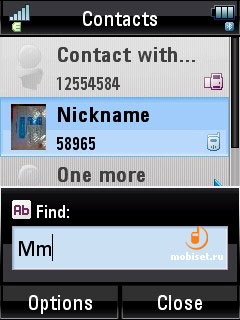
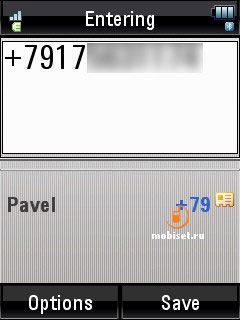

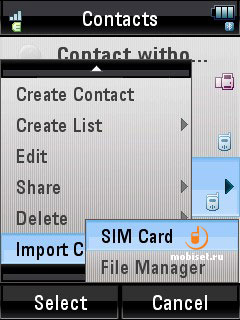
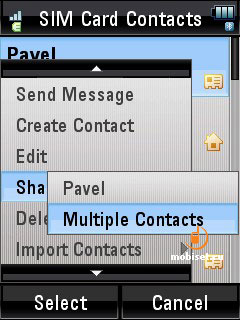
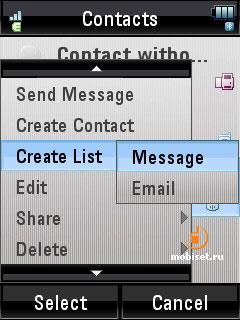
When creating a contact in the SIM-card, you can assign to a contact several phone numbers and note their type. In fact you make several contacts, but the phone joints them, it is rather handy. When creating a contact in the phone memory, you are enabled to enter much more data, they are sorted into four tabs. Apart from the first and last names the first tab saves up to 4 numbers of the different type (mobile, home, work, fax, another), two e-mails, nickname and contact category. Here you see a flag, which can call off doubling of the contact in the SIM-card. The second tabs says work and home address, in the third one you can choose a picture which is called up when the incoming call; here you can also set the ringtone. The last tab saves a text note, work information (company, title, manager’s name and assistant’s name). In addition you enter birthday, children’s names, spouse’s name. When viewing the created contact, all data are also sorted by tabs, so there is not a problem at all to find the necessary information.
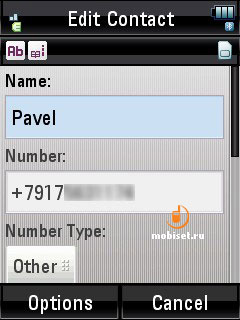

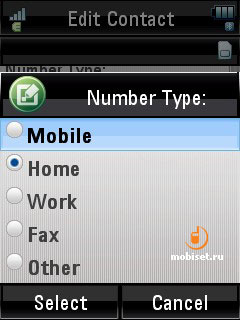
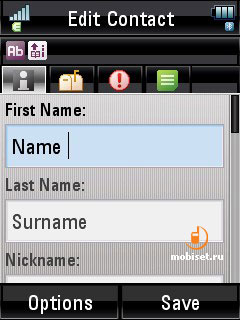
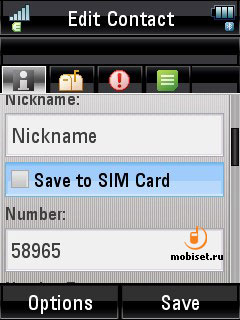
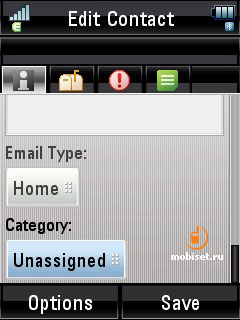
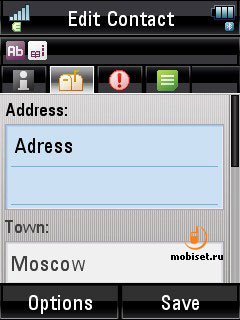
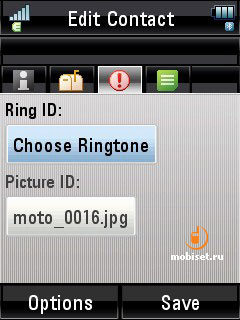
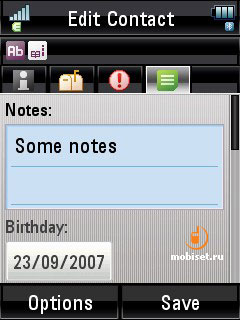
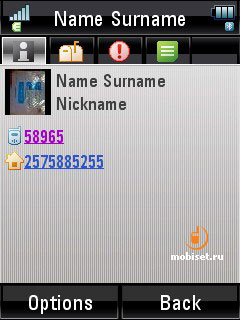
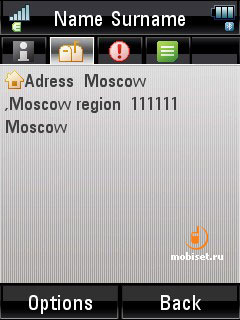
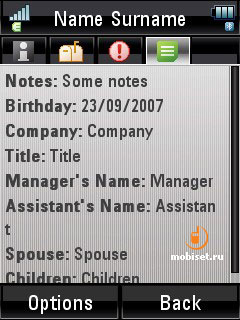
Messages
You work with all types of messages with the help of one application. The start window of the program gives access to the inbox, outbox, drafts, e-mail and voice mail. In the separate item you find My folders with mail and templates. There are 14 templates of SMS and 10 of MMS, also you are enabled to create your own. All messages are called up as a list; the first line says sent/receive date and contact name, the second – the beginning of the message. The list may be sorted by date, size, contacts and memory type.
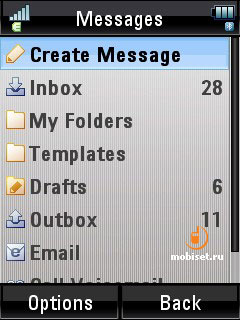
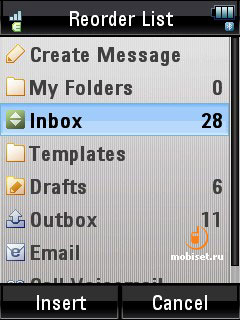
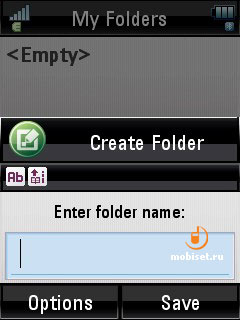
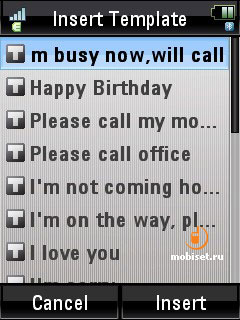

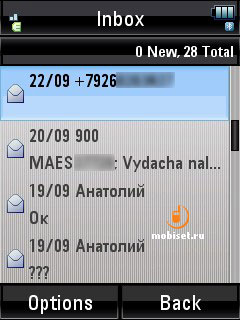
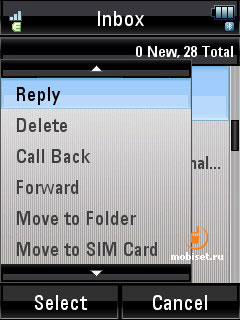
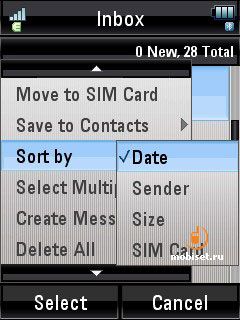

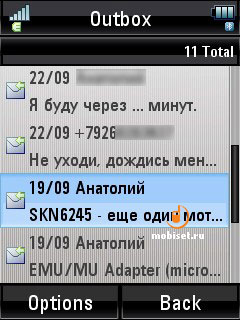
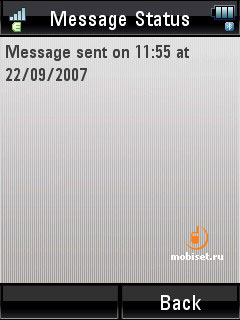
When creating a new message, the phone automatically appoints its type (SMS/MMS), but you can also fix it yourself. If you add any available attachments (picture, track or video), a message becomes MMS. The hyperlinks, phone book notes and text templates can be attached to any SMS. The multi-paged multimedia messages are supported. In the MMS settings you enter its theme, copies (hidden or not), priority, read and delivery reports. In the special menu you set service profile, reports and browse validity. In the SMS settings you can adjust permanent delivery report, new service profiles and activate GPRS-sending. Message can be sent to several contacts synchronously.
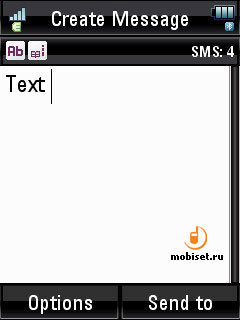
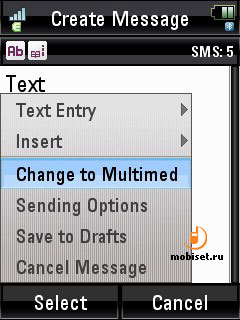
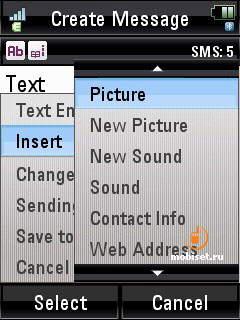
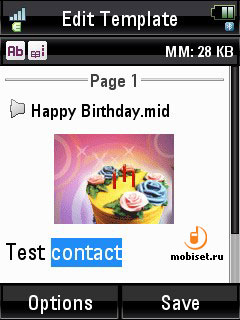

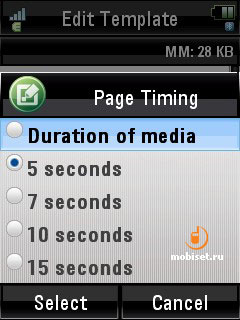
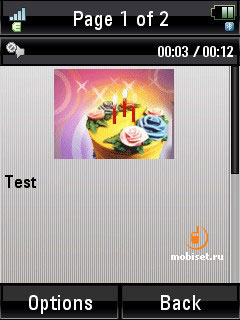
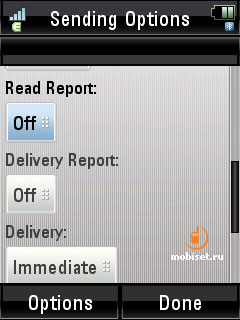
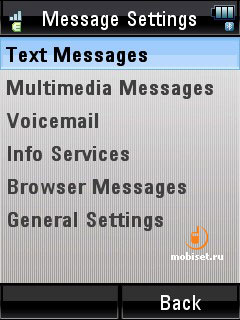
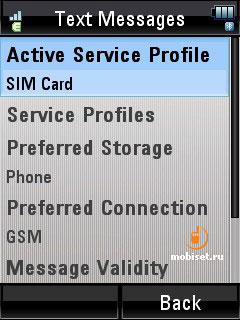
You can work with SMS-messages using the internal display. Without opening the phone, you can read an incoming message, delete it or choose one of the quick replies.

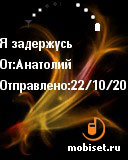
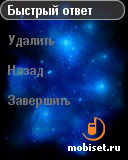
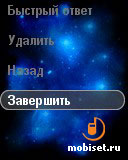
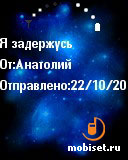

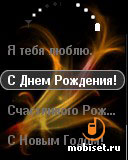
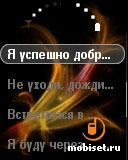
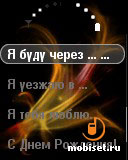
We’d like to note how the text entry is implemented in the MOTO U9. To navigate through the Text Modes in one layout (tap, iTap, symbols, numerical) you press the “#” button. If you need to change the language, you have to press long “#” button and then choose one language from the appeared list. With “0” pressing you change the case.
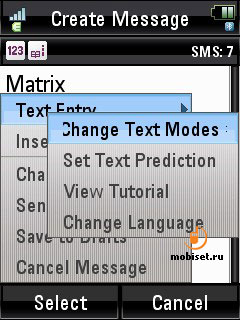

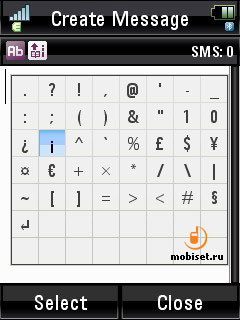
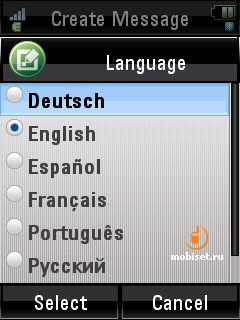
When in the Tap entry mode, you have to press the same key several times in order to enter a letter; in the iTap mode you should once press a button, and then the phone itself selects the necessary symbol using the on-board dictionary. When texting, the handset offers different endings. If you want to choose one of them, use “up” and “down” buttons; to reject the endings press “OK” key. The built-in dictionary is rather big, it is replenished automatically, if you want, you can turn it down. To look closer at this option, the phone provides a small help.
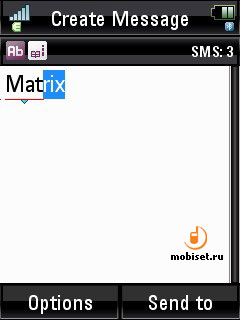

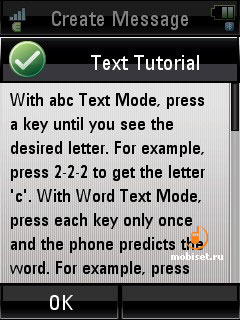
When the first start of the e-mail, you see Email configurator. The adjusting is carried out automatically, you should only enter the e-mail address and password. In the most cases the program sets the account settings without errors; later you can change the settings in the special menu. The rest settings include Download Size (Entire Email, Headers Only, First 1/5/10 Kb), Manual Delete Rule (to delete the messages from the phone only, or from the phone and server), Manage Signature, Delivery Receipt and Internet connection profiles. The handset is enabled to send and receive messages in the background mode.
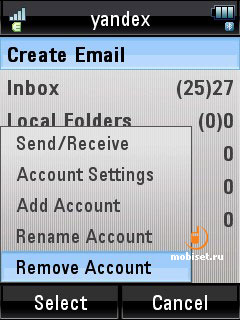
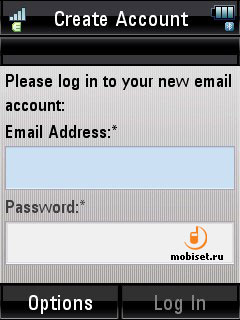
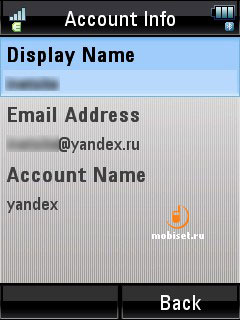
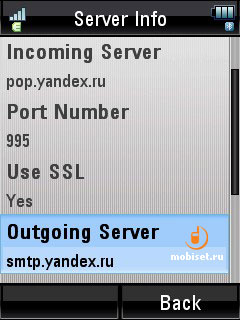
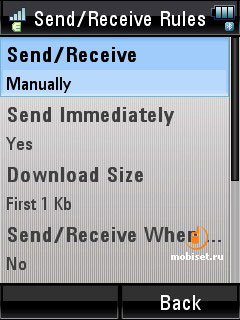
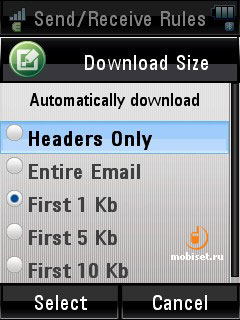

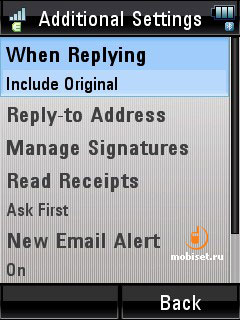
The email application sorts all messages into inbox, outbox, sent and drafts folders. You can create the additional categories and move there your letters. All letters are called up as a list; the first line says the receive/sent date and sender/receiver names, the second line – theme. The list is sorted by size, address, priority and date. The unread messages are bolded. If the phone sets the Headers Only, you have to press the corresponding button to download the rest part of the letter. All attachments are opened in the special applications (the HTML emails are opened in the browser); you can save them in the phone memory or sent in the messages or vie Bluetooth. The messages can be readdressed.
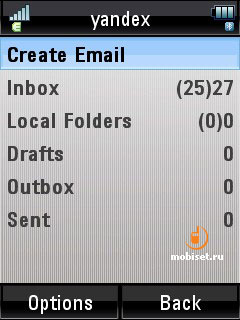
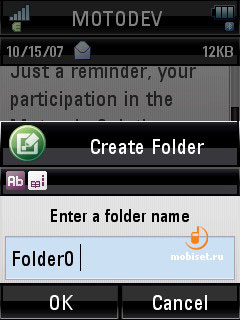
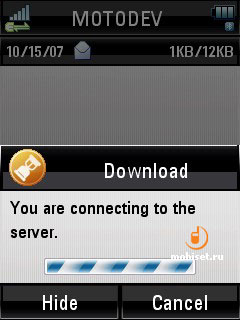

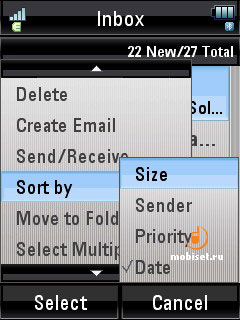
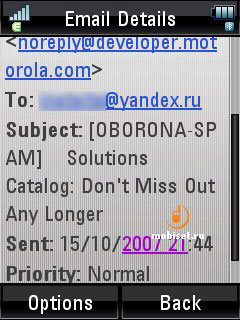
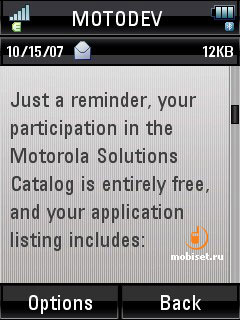
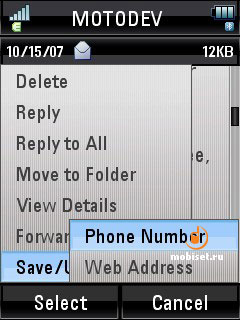
When creating a new Email, you have to enter a contact, theme and text. In the menu you set copies of the letter, priority, read/delivery receipt. As an attachment you can use pictures, tracks, video files, phone book notes or any file from both phone and card memory. Before sending the message can be saved in the Drafts. The on-board Email-client is simple, functional and handy.

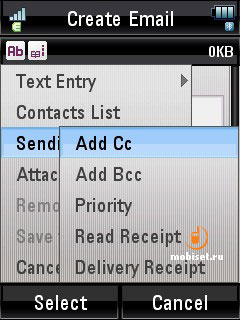
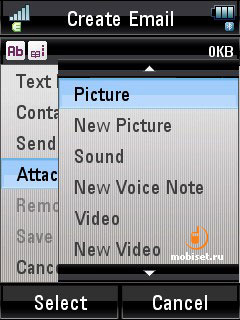
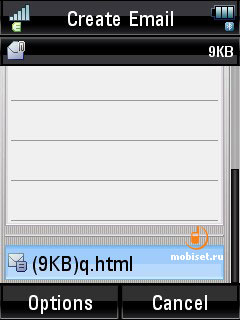
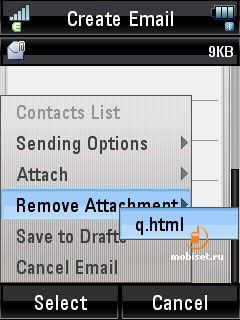
Calendar
The calendar is equipped with 3 view modes of the forthcoming events – Day view, Week view, Month view. In the latter mode the handset selects the dates with the appointed events with vertical violet lines. Their length and position depend on the time of the event. The same system is applied in the other view modes, but when you look through events of a day, the calendar also shows a name of the event and the time schedule. The events can be deleted, copied and sent in the messages or via Bluetooth. In the Calendar Setup you set the number of the days of week, work hours and step of the timescale. In addition you can switch on the automatic deletion of the passed events upon the fixed expiry. The birthday dates of the contacts from the phone book are fixed on the corresponding dates in the calendar.
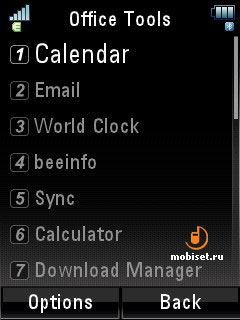


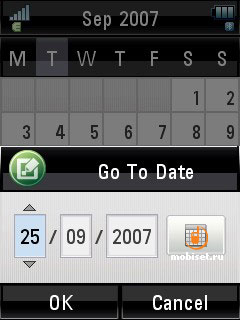
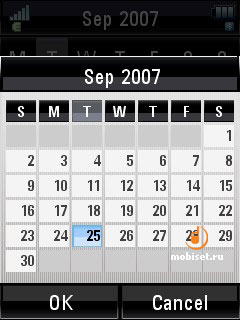
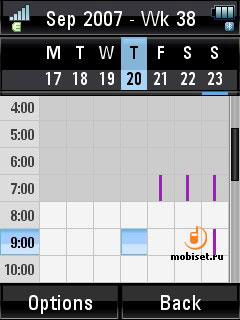
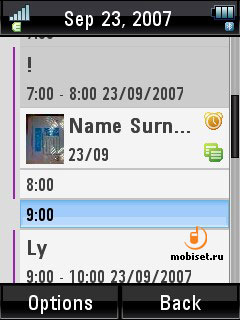

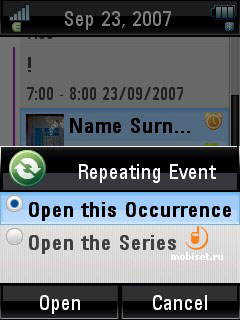
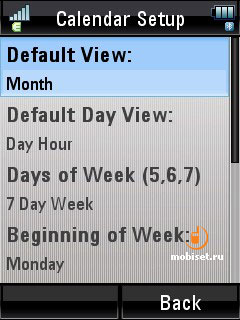
When you create a new note, all data are sorted into 4 tabs. The first tab fixes the event type: meeting, presentation, conference call, breakfast, anniversary, flight and so on. As the alert you may choose audio files, voice notes and video tracks. In the rest tabs you set notes, members of the event, your plan on this event (busy, free, out of the office) and Sensitivity (personal, private or confidential). Apart you fix Repeat settings, they are also very flexible.
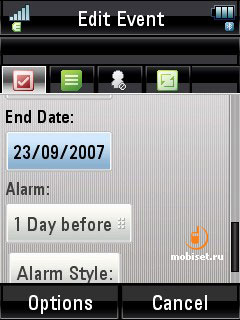
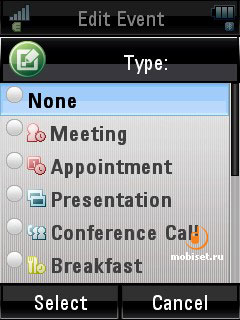
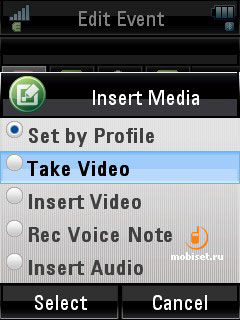
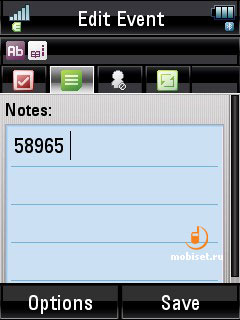
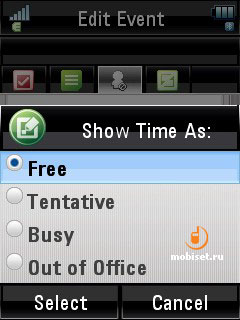

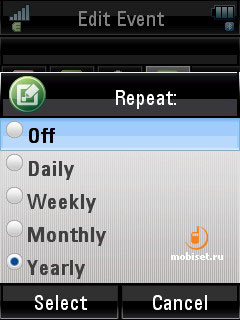
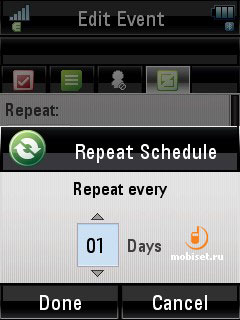
Tasks
To control different kinds of tasks the handset provides the appropriate application. Each note may have name, priority, end time or any text note. The program allows to tick each fulfilled task. The list can be sorted by status (finished or not), priority or end time. The notes may be sent via Bluetooth and in the messages.
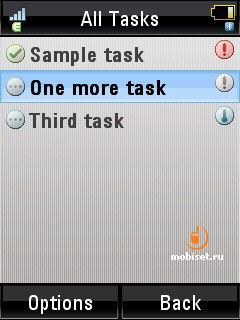

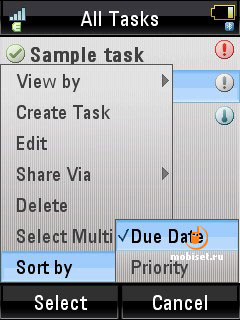
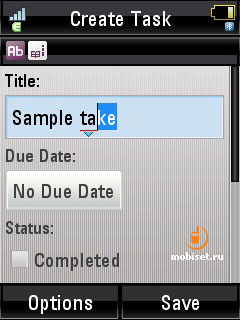

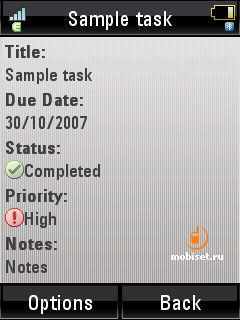
Notes
To create short notes the phone is equipped with the “Notes” application. The maximal size of a note is 256 symbols. Each note may be flagged. All notes are saved in the phone in the one inner format, but when being sent vie Bluetooth, they are converted into *.txt. But at the same time the phone can’t open TXT-files (you can rename them into *.html and read in browser). In the menu you are enabled to choose one or several notes, flagged or delete them.
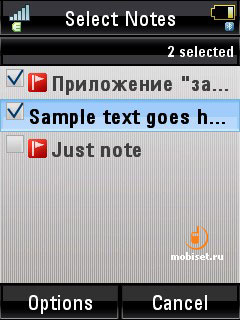
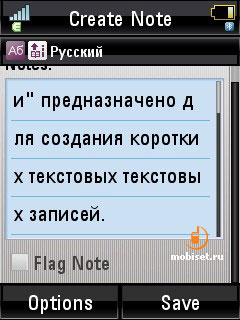
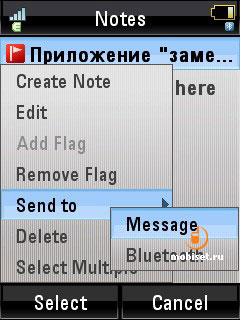
Calculator
With the help of the on-board Calculator you can perform any simplest arithmetic with the 12-digit numbers. The interface is very simple: from the main numerical keypad you enter numbers and service digits (period and discard), the navigational key allows to choose any type of the arithmetic steps. Besides, with the help of the contextual menu you can calculate square root and vice versa. The results can be saved and called up.
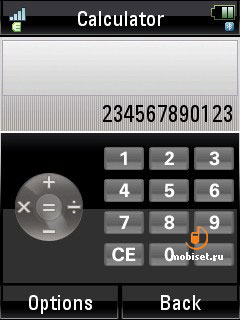
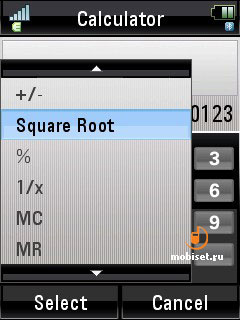
Alarm clock
The device saves up to three alarms clock, they all can be used regularly. In the settings, besides tone and loudness, you can adjust repeat mode: everyday, weekdays or custom. The alert rings even when the phone is powered off. In addition you may set a period you are going to doze before woke up: if you do not turn off the alarm clock, but make a pause, it will rings again after several minutes.
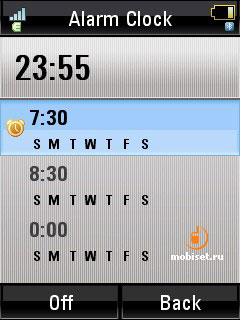
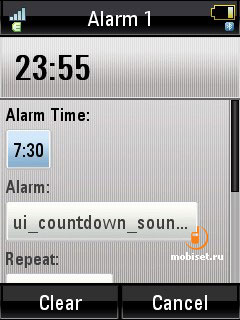
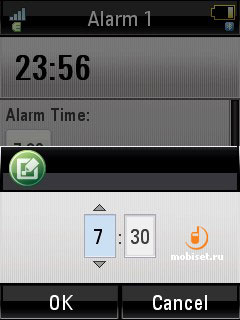
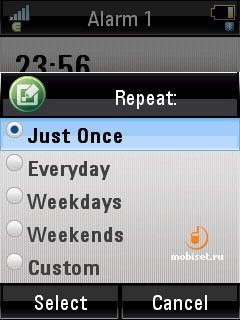
World time
The program is designed to compare time in different cities. The main window of the program shows the current time in three selected cities; you may fix your place of location. In the map view mode you are enabled to view the corresponding time zones, which are marked with vertical lines of the different colours. There is also a comparative view calling up the comparative time table of the three selected cities.
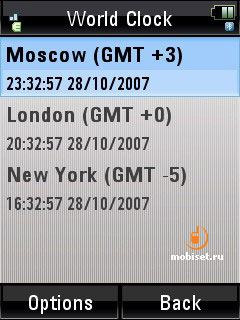
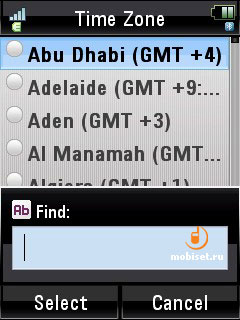
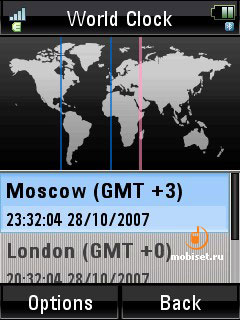
Internet
As we have already mentioned, the new software utilizes the new browser. The Motorola Symphony 1.1.0 browser is based on the open source engine “KHTML” and almost identical to the Opera 8.5 for Linux, that is used n the V8 and the Z6. The application easily deals with the bulk html-pages, supports javascript. One of the browser merits is the high speed of work; even the massive pages with the irregular formatting are scrolled without freezing.
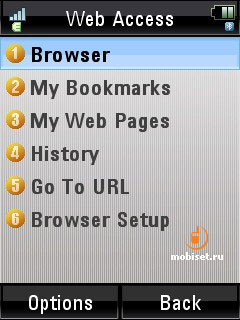

The program supports the multiscreen mode; the selected link can be opened both in a new and in a current window. The navigation through the downloaded pages is carried out with the help of “#” button. There are two ways of the site formatting: in one column or “as it is”. In the latter way you see the important difference Symphony from Opera – the handset doesn’t squeeze texts till the screen width, but shows it “as it is”. This mode can cause some problems. But on the other hand, there is now problem with the text entering in the multiline edit fields, that is inherent to the Opera-browser. In the settings you are enabled to turn off the image and animation browsing and adjust the displaying pop-up windows.
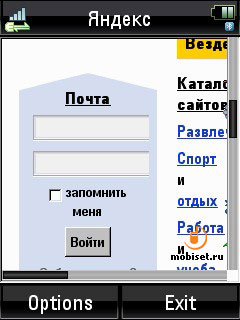
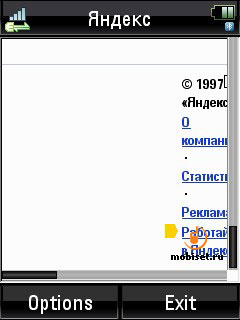
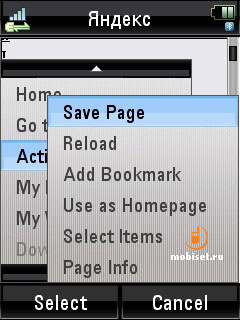

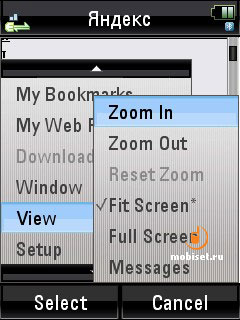
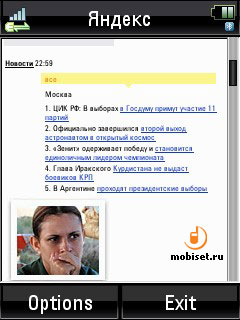
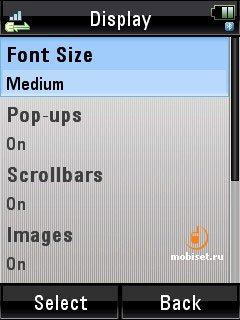
Download manager
All files downloaded from the Internet or sent via Bluetooth are displayed in the “Download manager” application. All downloads are sorted into two tabs depending on the way of transferring. In the top part of the list you see the files which are not downloaded yet. When selecting them, you see a line on the screen informing how many per cent have already downloaded. What I like about the app is that you can download all files, even those that are not supported by the phone, afterwards you can send them to the PC.

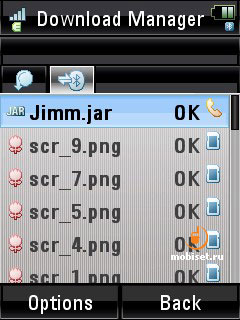
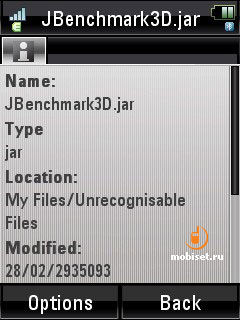
Games and application
The on-board virtual JAVA-machine provides rather high work speed of the outside applications. The support to the great number of API (including the access to Bluetooth and file system, network connections, 3D-games and multimedia) settles the problem with incompatibility of the phone with the most of midlets. All installed applications are stored in the common list. In the settings you set the internet connection profile, access parameters and view all the information from the midlet. In the full-screen mode the application occupies the whole screen except the informing line in the top of the screen. You are enabled to minimize the applications, however, you can’t, unfortunately, start several applications simultaneously.
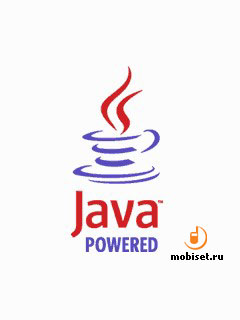
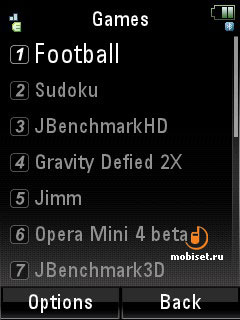
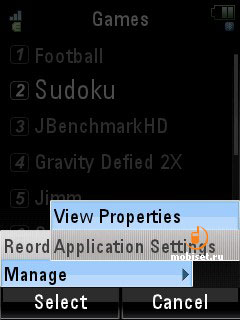
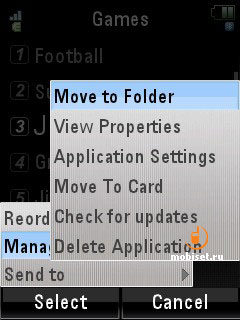
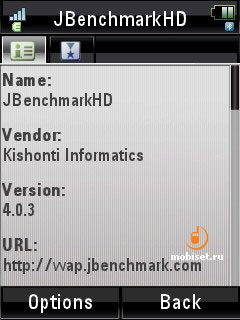
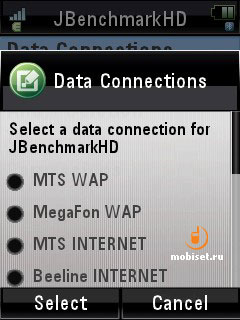

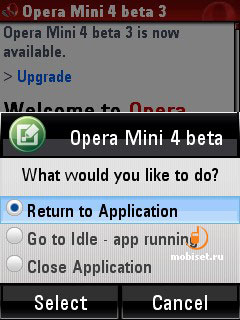
By default the handset ships with two plain preinstalled games – “football” and “Sudoku”. The table below shows JBenchmark testing results. But we should say beforehand, that the market devices will have the higher results, as the tested sample had the debugging mode switched on.
| JBenchmark: 5924 | JBenchmark2: 567 | JB 3D HQ: 344 | JBenchmark4 HD |
| Text: 1339 | Image: 547 | JB 3D LQ: 352 | Smooth tr: 81889 |
| 2D Shapes: 1491 | Text: 997 | Triang. ps: 32705 | Textured tr: 61088 |
| 3D Shapes: 1000 | Sprites: 541 | KTexels ps: 3317 | Fill Rate: 1332 kTx |
| Fill Rate: 705 | 3D Transform: 861 | Gaming: 256 | |
| Animation: 1389 | UI: 230 | Gaming: 8.5 fps | |
| 3D Subsystem: M3G1.1; Max lights: 256; Perspective correction: True; Local camera lightning: True; CLDC: 1.1; MIPD: 2.0; Canvas size: 240x254; Fullcanvas size: 320x240; Double buffer: True; Colors: 262144; Alpha levels: 256; Video capture: True; Mixing: True. | |||

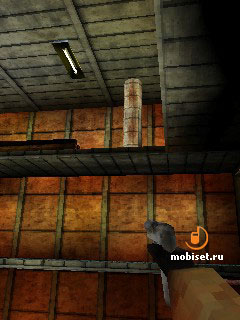
Media finder, player
The familiar “multimedia” was replaced by the more functional application “Media Finder” working with Videos, Pictures, Voice notes, Ringtones and Wallpapers, in addition to music tracks. However, the pressing the music player key still brings you to this item of the application connecting with music. The videos and pictures are sorted by categories, which are as follows: Captured pictures, Downloaded pictures and All pictures. You are also enabled to sort them by date.
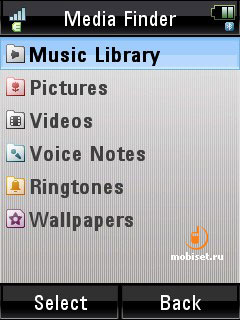
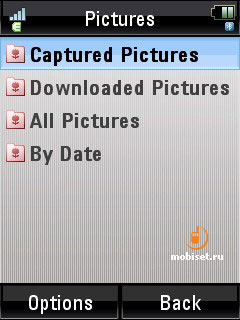
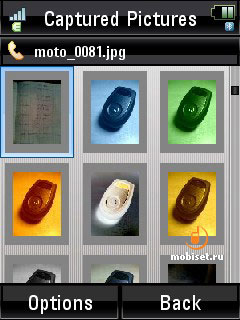
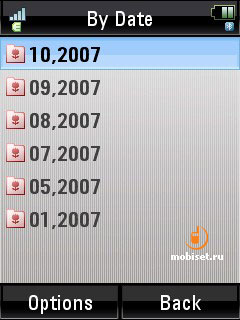

All music tracks are sorted into the corresponding categories based on the tag information. The refresh of the library doesn’t take much time, it can be performed in the background mode. When choosing a song, you can start with an artist, album, genre or composer. Some items of the menu provide for an access to the playlist or recently played songs, the shuffle songs mode is also available. With working player, the first line of the menu says a name of the played song. After you choose one or several tracks, you can see their properties, delete or send them in the message or via Bluetooth or add to the playlist.
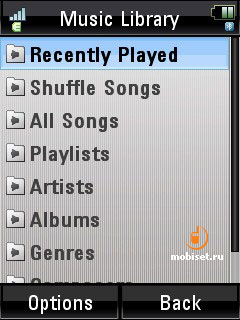
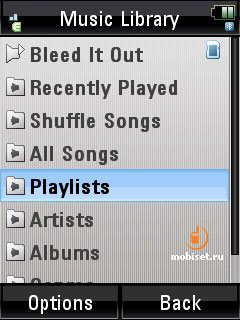
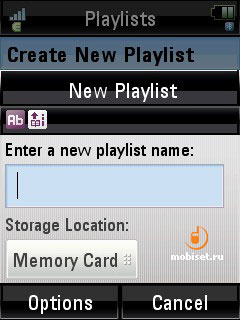
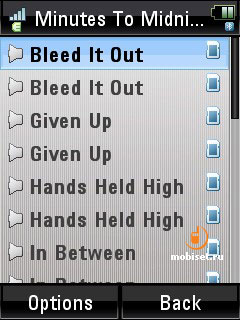
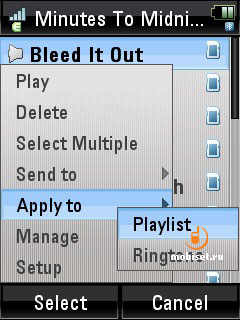
The player interface hasn’t changed much. The screen informs you with a name of the file, creation date, size and the tag content of all songs. The bottom part of the display shows the information about the played part of the song and the whole time of it, the information is doubled with the progress bar. The rewind is even, but speedy and you can easily find the necessary section of the track. The headset supports Album Art; the cover of the album is depicted in the bottom part of the screen, after a pressing on the central key, it is occupied the whole display. In the player setting you can make Repeat and Shuffle mode active and adjust the sensitivity of the stereo effects, such as “surrounding sound”. This phone for the first time can boast with an Equalizer allowing to activate one of the audio processing schemes, they are as follows: “Bass Boost”, “Rock”, “Treble Boost”, “Vocal Boost” and “Vocal Reducer”. Changing these settings you notice the higher quality.
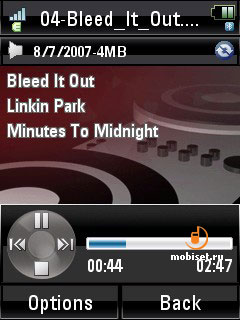
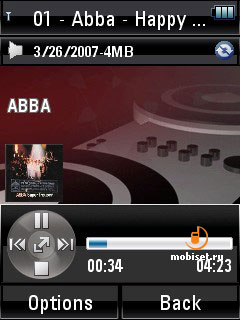
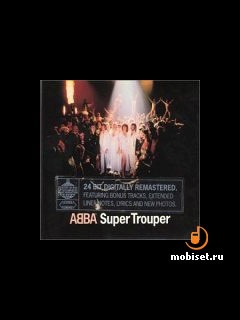
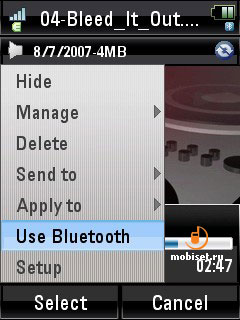
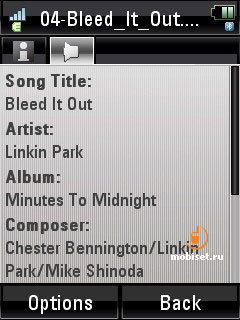
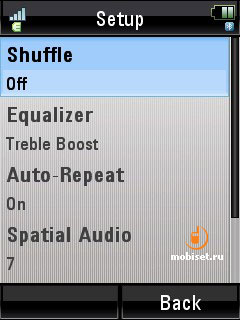
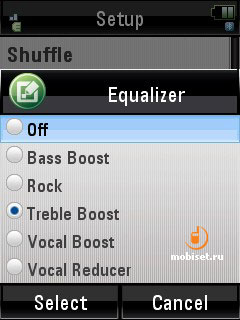
The player works well in the background mode, but in our opinion, its design in the minimized mode has worsened, though all capabilities remain the same. When the flip-phone is closed, you see the more interesting interface on the internal screen. On the top part of the display you see the crescent signs of the receive signal level, battery charge level; beneath – a note, when in the standby mode, or the sign of the current pressed touch sensitive key. There are 4 touch sensitive keys: previous track/back rewind, play/pause, next track/forward rewind. The second key is the screen itself: it is dedicated to return into the player interface, if a screen-saver starts or after the fixed time the display turns off. All keys are blocked with the long press the smartkey, so you shouldn’t be afraid of the false pressings. The played back part of the song is marked with the bold arc in the circle in the top part of the screen. Each side of it says the song’s duration and played back time. The centre of the screen displays a title, an artist’s name and an album’s name. The player interface is very convenient, the most actions can be done without opening the handset. Due to the indistinguishable display’s edges, a picture comes as if from the depths of the phone. Plus you can control it with a figure touch… and take pleasure in using it.
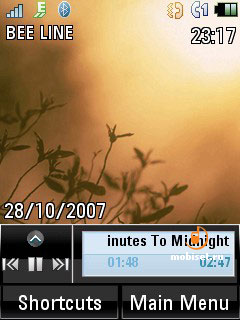
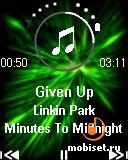
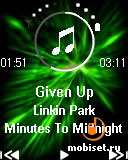


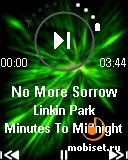
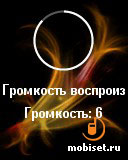
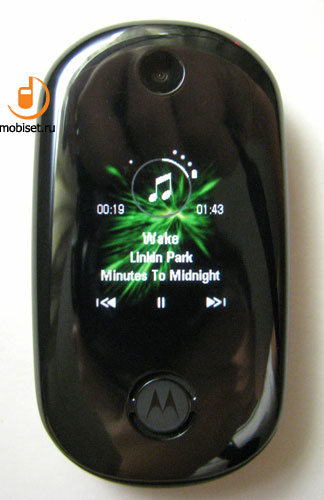
Video player
The video player interface is similar to the audio one, the only difference is that instead of tags the display shows a clip. To start playing back a clip in the full-screen mode you are to press the “option” key. You are enabled to rewind a clip during playing back. In the settings you can set the clip displaying in the normal size (by default a track fits the screen), adjust the rotation of the image in order to make the viewing in the full mode convenient. The most uncommon option is the slide-show of the video clips.
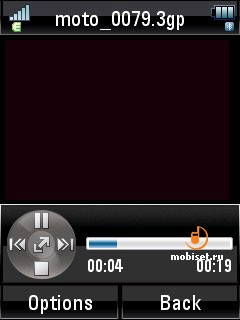
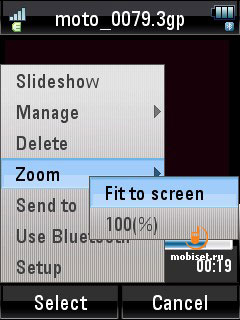
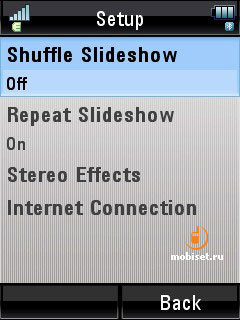
Voice recorder
You can record voice notes or phone talks with the help of the “Voice recorder” application. The record time, unless it is reduced to 60 or 150 seconds in the settings, is limited by the free space on the memory card. In the settings you set the place where the files will be saved and a prefix of their name. The record format is amr. The created files may be sent via Bluetooth or use as the ringtone. The main benefit of the new version of the voice recorder, in comparison with the V8, is that it can be started when the flip is closed.


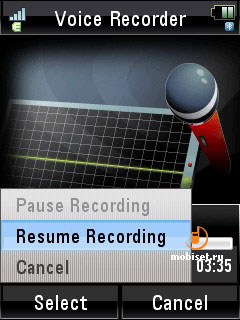
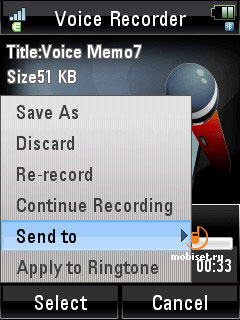
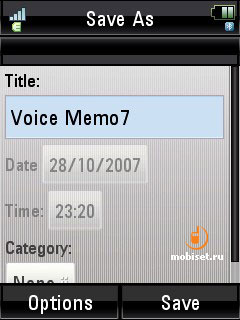
Pictures
The trend of application renewal hasn’t ignored the picture view program. Besides the standard capabilities of full-screen view and slide-show, the program makes it possible to zoom a picture. In the minimal size a picture fits the screen, the maximal is 200%. Zooming comes with 1-5% step, after that you are enabled to scroll the picture in any direction. At the same time the display shows two squares, one of them corresponds the original size, the other – the relative zoom and the location of the displayed part of the picture. The program also implements common functions of the picture editing. They are as follows: you can cut the pictures, change their size very accurately, use colour styles or rotate. The application supports printing via Bluetooth or USB (in this mode the phone is shown as a digital camera). All operations with pictures are carried out very quickly, in many ways due to the powerful processor.
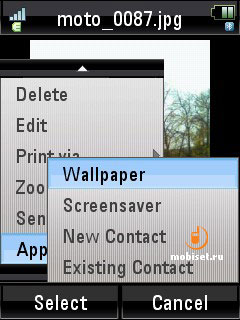
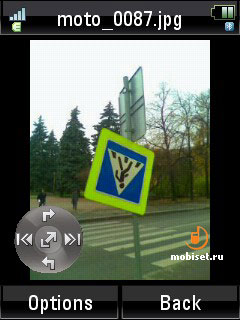
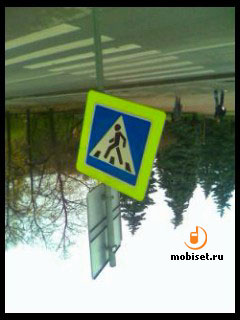
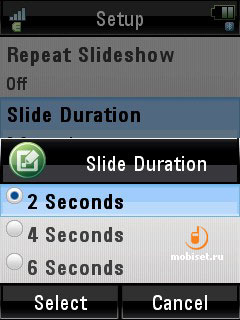
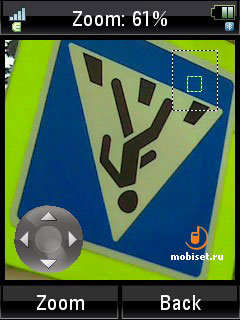
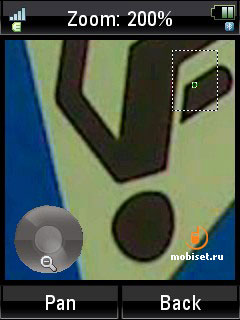
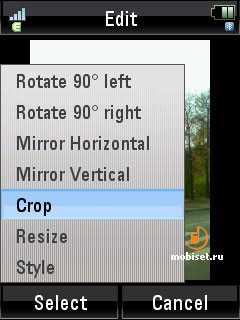
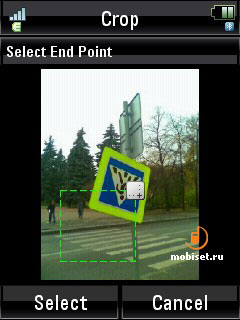
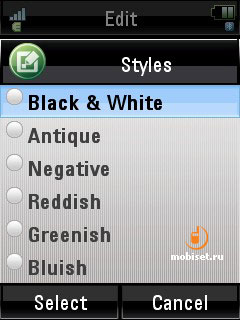
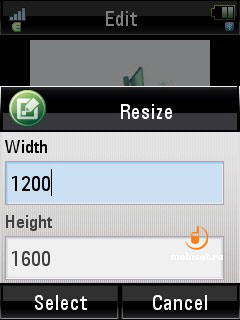
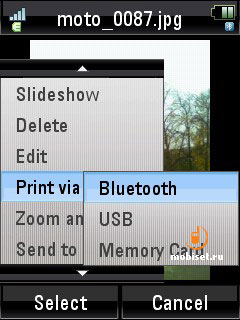
File manager
The handy on-board file manager allows working with files stored in the phone memory, as well as in the flash-card. The program supports 4 ways of viewing files and folders: List, Detailes (the name of the file is followed by the size, creation date), Thumbnail (instead of the icons all pictures are equipped with drafts, the video clips, shot on the phone, have the first shoot icon) or Preview pane. In the latter view mode the screen is divided into 2 parts, the upper part shows the minimized copy of the picture or screen. The list may be sorted by name, size and type. One or several files can be sent in the message or via Bluetooth. Besides, you are enabled to create new folders, delete, copy, move and rename files and look through their properties.
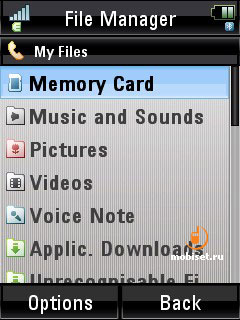
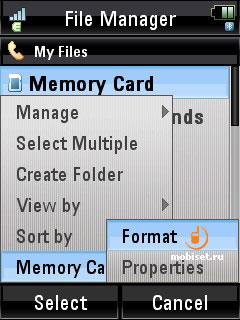
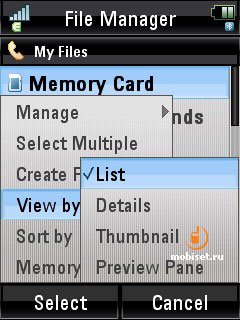
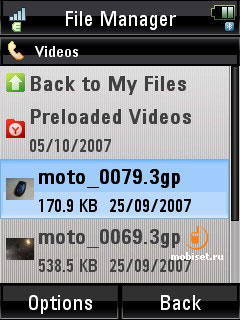

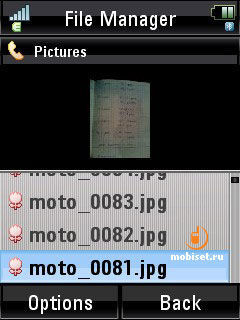
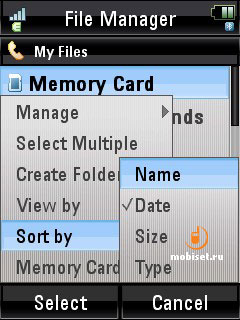
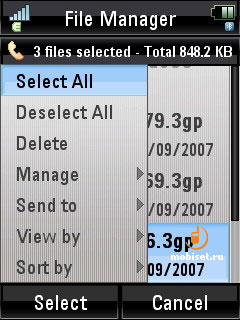
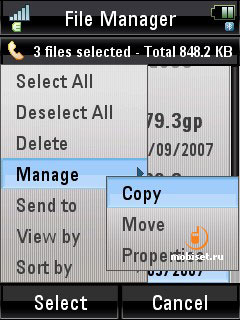
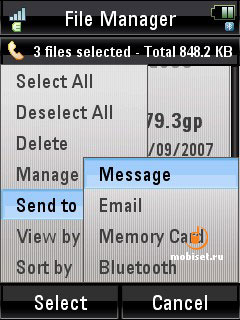
Camera
The interface of the 2Mpix camera can't boast any significant renewal. The most part of the screen is occupied by the viewfinder picture; the top part of the display shows icons reflecting the number of pictures that can be more done according to the free space in the memory, the memory type (flash-card or the phone memory), resolution. Beneath you see the cycle correspondent to the navigational key. The “up” and “down” buttons are used to navigate among the settings (x8 zoom, styles, night scene, lightning, exposition, tags). The “right” and “left” buttons are in charge of a setting level. In general this control is handy and sound. The supported styles are of no great interest (Negative, Black&white and several colour filters, e.g. Bluish, Greenish and so on), the exposition has 1 step from -2 to 2. The White Balance (auto, sunlight, cloudy, home and office) perceptibly changes the colour rendering. There is also the MultiShot mode allowing to make series of stills and to shoot with a timer. The Tags function makes it possible to record in a file one of the files beforehand chosen in the settings. Besides you can change a prefix of the file, memory type, Resolution (240õ320, 480õ640, 960õ1280 and 1200õ1600), Quality and Shutter Tone. You can shoot with the phone folded, at the same time a picture is displayed on the internal screen, the volume rocker key becomes in charge of zooming, the smartkey saves stills.
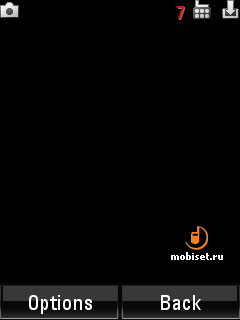

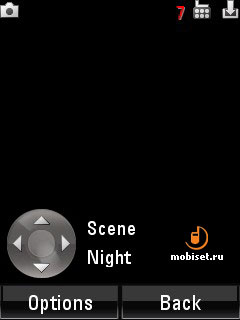
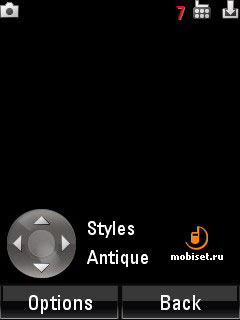
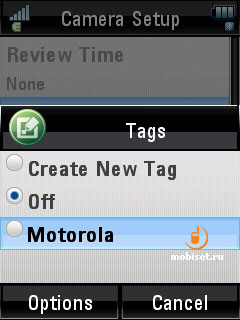
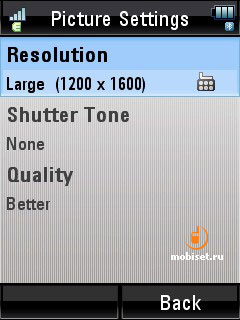
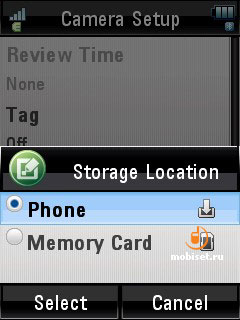

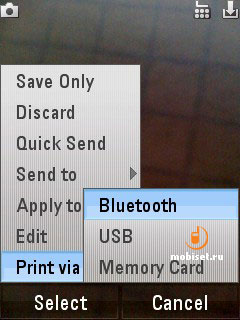
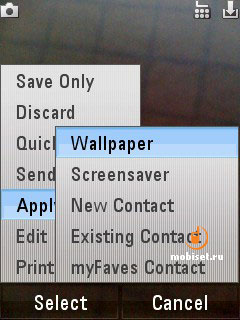
To judge the quality of pictures done on the engineering sample is not reasonable, as the commercial model of the phone may see substantial changes. However, even now we can distinguish some features. The stills aren’t notable for high sharpness, the colour rendering when shooting distant objects is quite acceptable. The main advantage over the 2Mpix matrixes installed on the previous Motorola phones is that the camera is enabled to focus on the 8-10 cm distance. This capability allows to shoot a book page without any problem. But in the middle of the still you see rather strange colours. To get a thorough view of the picture quality look at the following stills.
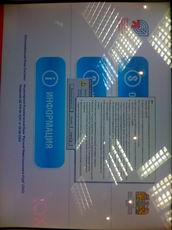 [+] maximize, 1200x1600, JPEG, 196 KB | 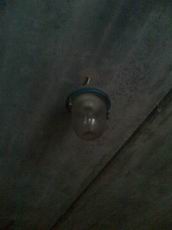 [+] maximize, 1200x1600, JPEG, 155 KB |
 [+] maximize, 1200x1600, JPEG, 223 KB |  [+] maximize, 1200x1600, JPEG, 180 KB |
 [+] maximize, 1200x1600, JPEG, 326 KB |  [+] maximize, 1200x1600, JPEG, 255 KB |
 [+] maximize, 1200x1600, JPEG, 324 KB |  [+] maximize, 1200x1600, JPEG, 152 KB |
 [+] maximize, 1200x1600, JPEG, 295 KB |  [+] maximize, 1200x1600, JPEG, 253 KB |
 [+] maximize, 1200x1600, JPEG, 229 KB |  [+] maximize, 1200x1600, JPEG, 174 KB |
 [+] maximize, 1200x1600, JPEG, 239 KB |  [+] maximize, 1200x1600, JPEG, 185 KB |
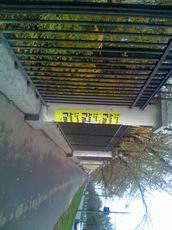 [+] maximize, 1200x1600, JPEG, 273 KB |  [+] maximize, 1200x1600, JPEG, 219 KB |
 [+] maximize, 1200x1600, JPEG, 303 KB |  [+] maximize, 1200x1600, JPEG, 179 KB |
 [+] maximize, 1200x1600, JPEG, 167 KB |  [+] maximize, 1200x1600, JPEG, 312 KB |
 [+] maximize, 1200x1600, JPEG, 275 KB |  [+] maximize, 1200x1600, JPEG, 200 KB |
 [+] maximize, 1200x1600, JPEG, 138 KB |  [+] maximize, 1200x1600, JPEG, 116 KB |
 [+] maximize, 1200x1600, JPEG, 155 KB |  [+] maximize, 1200x1600, JPEG, 165 KB |
 [+] maximize, 1200x1600, JPEG, 359 KB |  [+] maximize, 1200x1600, JPEG, 323 KB |
 [+] maximize, 1200x1600, JPEG, 216 KB |  [+] maximize, 1200x1600, JPEG, 139 KB |
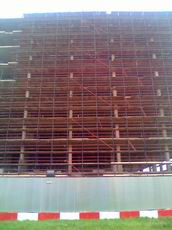 [+] maximize, 1200x1600, JPEG, 260 KB |  [+] maximize, 1200x1600, JPEG, 97 KB |
 [+] maximize, 1200x1600, JPEG, 164 KB | 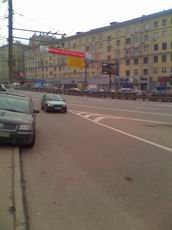 [+] maximize, 1200x1600, JPEG, 150 KB |
 [+] maximize, 1200x1600, JPEG, 161 KB |  [+] maximize, 1200x1600, JPEG, 131 KB |
 [+] maximize, 1200x1600, JPEG, 145 KB | 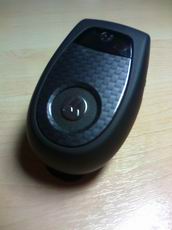 [+] maximize, 1200x1600, JPEG, 139 KB |
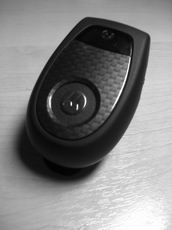 [+] maximize, 1200x1600, JPEG, 120 KB |  [+] maximize, 1200x1600, JPEG, 121 KB |
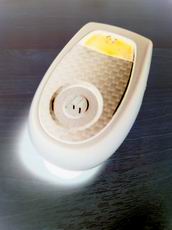 [+] maximize, 1200x1600, JPEG, 139 KB | 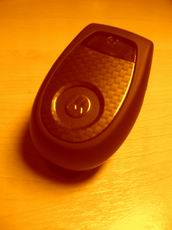 [+] maximize, 1200x1600, JPEG, 123 KB |
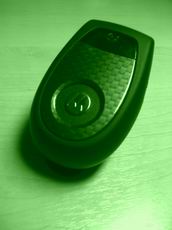 [+] maximize, 1200x1600, JPEG, 121 KB | 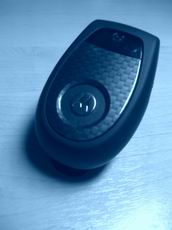 [+] maximize, 1200x1600, JPEG, 118 KB |
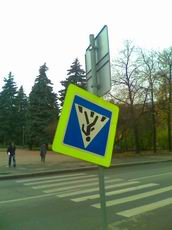 [+] maximize, 1200x1600, JPEG, 184 KB |  [+] maximize, 1200x1600, JPEG, 148 KB |
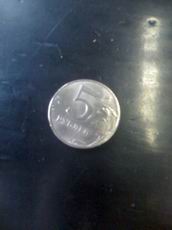 [+] maximize, 1200x1600, JPEG, 157 KB | 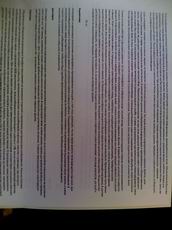 [+] maximize, 1200x1600, JPEG, 274 KB |
Video camera
In the video camera mode the viewfinder occupies about 2/3 of the screen, as for the rest the application interface copies the photo camera one. While recording, you can change colour styles, zoom (x4 is maximum zooming) and use the night mode. In the settings you can turn off the Audio, choose one of two types of Resolution (128õ96 and 176õ144), Quality and Video length (MMS or maximum). All clips are saved in the 3gp format. The record quality is rather high, the only complaint is about the low resolution.
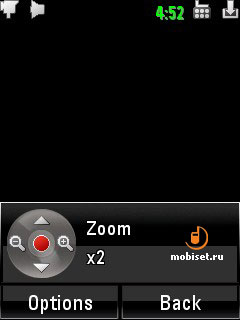
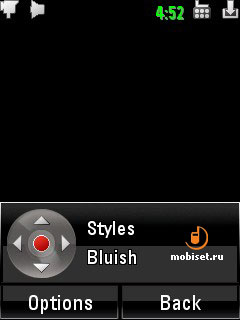
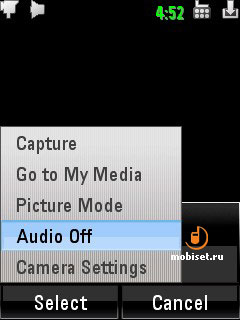
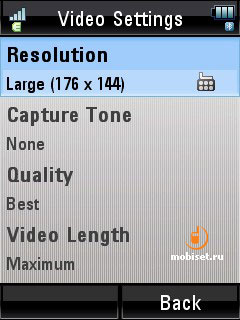
Video sample 1, 3gp, 184 KB >>>
Video sample 2, 3gp, 480 KB >>>
Video sample 3, 3gp, 171 KB >>>
Video sample 4, 3gp, 141 KB >>>
Connections
The settings of all types of the wireless and cable connections are gathered in one application. Here you can choose how the phone is found when wired with the PC via USB – as a modem, a player (to synchronize songs with Windows Media Player 11), a removable disk or a photo camera. The latter mode allows to print pictures done with the U9 camera very quickly. The copy speed is very high – about 1.5 Mb/s.
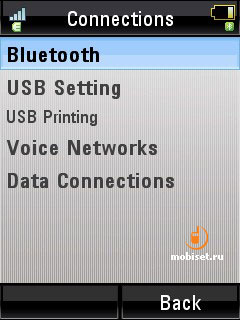

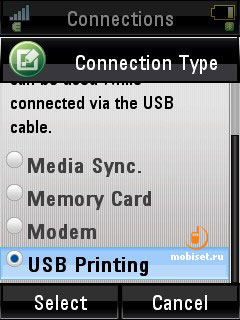
In the Data Connections you can edit one of the available connection profiles or just add one more. Though the U9 doesn’t support Wi-Fi, in our engineering sample the settings to this function hasn’t been switched off and we could see how this function will be implemented in next models. In the Connection Preference you can choose a type of the connection (Wi-Fi, then GPRS/EDGE; Wi-Fi only, GPRS/EDGE only). Besides the phone comes with VoIP-client, unfortunately, compatible only with Wi-Fi.


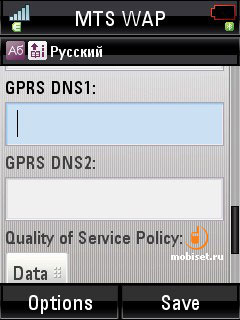
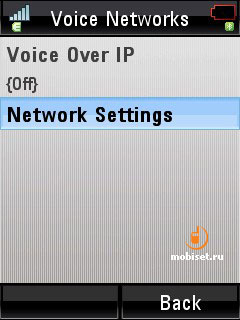
Bluetooth
All Bluetooth devices are sorted into those, with which the device has been connected and with which not. In order to connect the phone with any device, you should select it from the list. The search for the devise is based on its type (“all”, “headset”, “PC”, “phone”, “PDA”, “printer”). It takes the phone 3 minutes to find new devices. In the menu you may adjust the access rights to other devices and change your Bluetooth-name. The A2DP and AVRCP support allows to connect the phone with wireless headphones. The stereo headset sound delights the ears with good quality and basses; there are buttons to control the player distantly. The handset supports Pluetooth 2.0 Class2 specification.
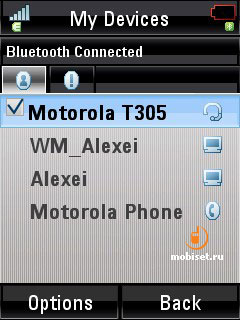
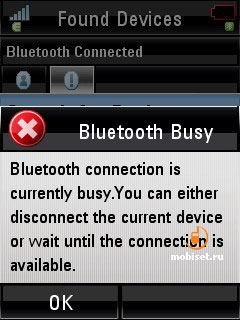
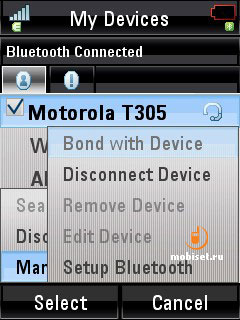
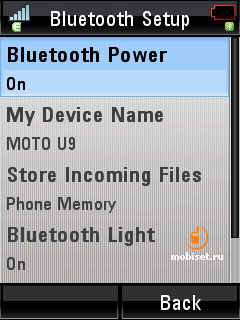

Synchronization
The utility for synchronizing became easier in use. When the first start, the program offers you to name the connection type – with your PC and cable or using the remove server in the Internet. If you choose the first variant, the program tells you that you should start Mobile Phone Tools and plug the wire. If the synchronization has to be carried out in the Internet, you have to enter the server address, partner name, username and password. The next step makes you choose which date have to be synchronized (contacts, calendar or notes) and the contact address on the server. Before save the profile, the device checks the server connection.
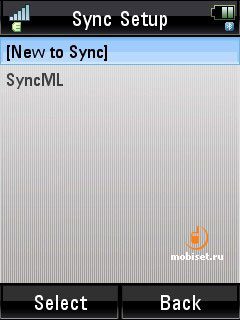
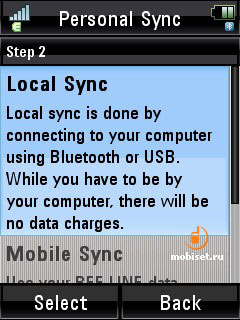
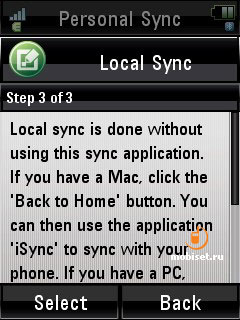
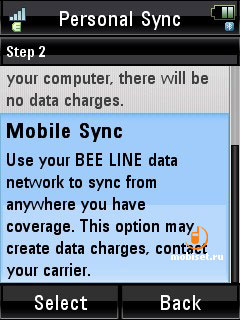

Settings
All settings of the phone are gathered in the corresponding item of the main menu and sorted into categories. Here you can change the current alert profiles or create new one. To navigate among the saved profiles is very easy: just press any volume button and choose the necessary variant from the list with either opened or closed device.
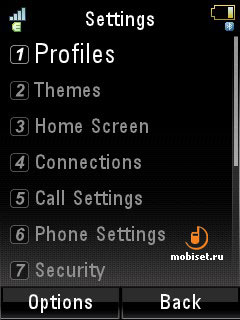

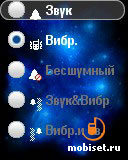
The profile settings include name, alert style (silent, ring only, vibrate only and ring&vibrate). In three additional tabs you may adjust alert volume, keypad volume, playback volume and melodies to the different system events (to the all types of messages and calendar).
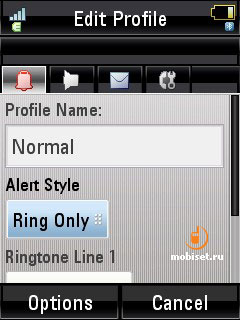

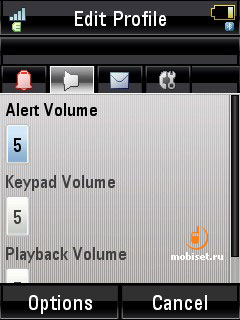

Another menu item provides for the screen themes. There are three skeens, the same were preinstalled in the Z6 and the V8. By default the “Electra” theme is chosen, that is the most suitable to the phone design. The other themes are made in the white&blue and white&pink colours. They colours contrast with the design of the main menu featuring as always the black palette, only the background ornament changes (it also has dark colours). The theme settings include ringtones to the different calls, wallpapers, screensaver, a picture to the switching on/off and capability to use one of the aforementioned skeens. The internal display comes with 20 different screensavers; they all have the dark background and look very impressive.
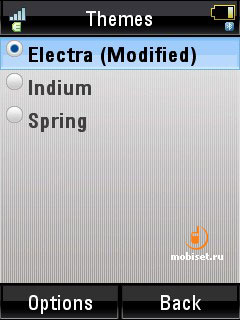
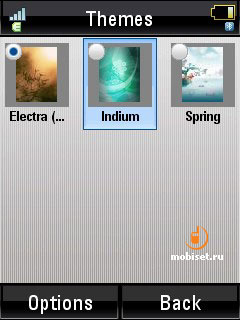
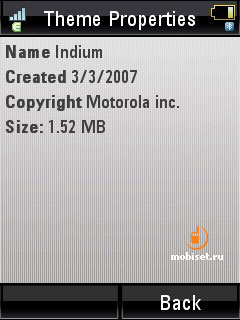
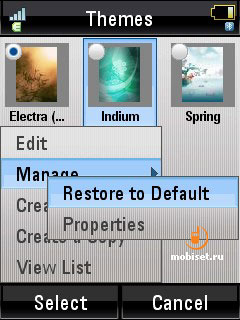
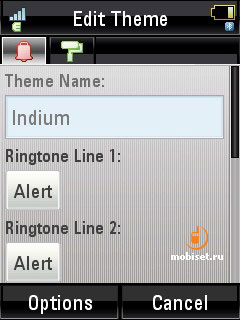
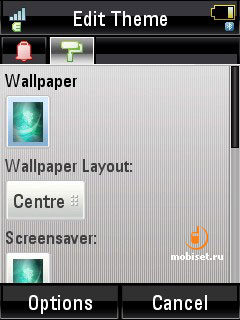
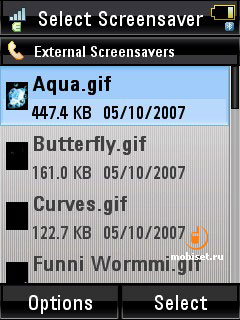
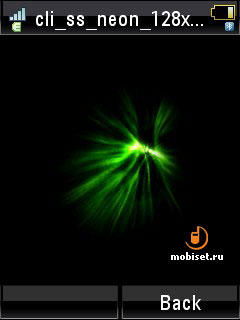
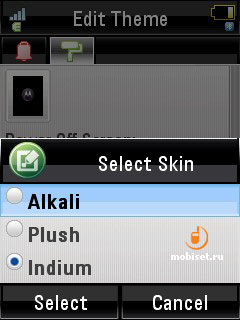
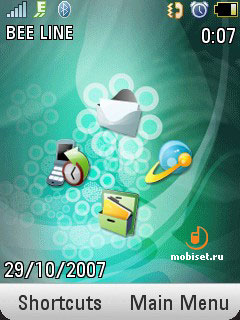
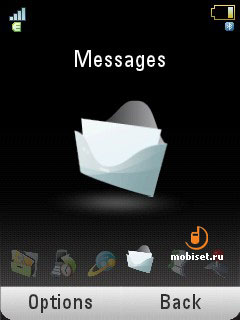
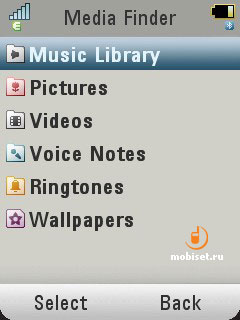
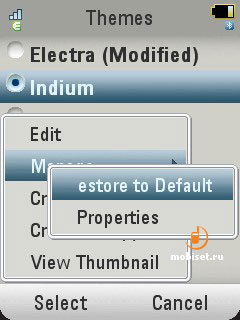
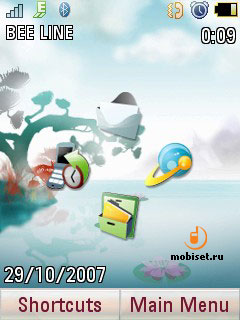
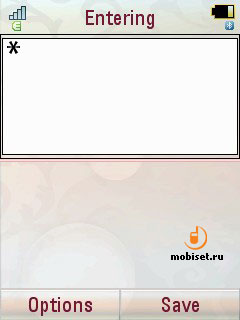
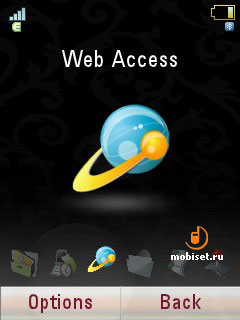
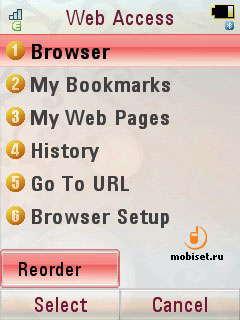


The rest settings allow to change the tabs and the watch design on the internal screen, phone settings, network settings and security settings (different passwords and blocking of some apps). You are enabled to check the information about the installed software, to change the language, time and date, to fix the brightness and activity time and switch on the “talking phone” function.
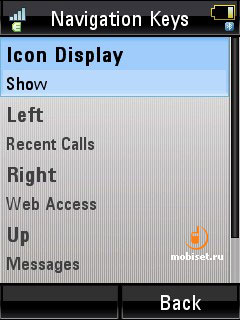
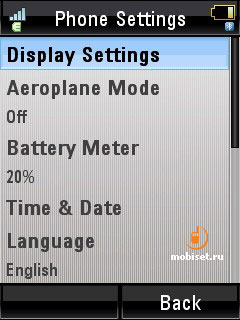
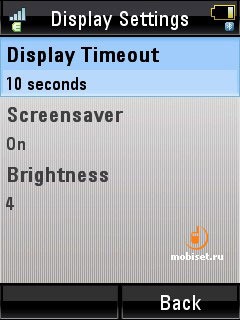
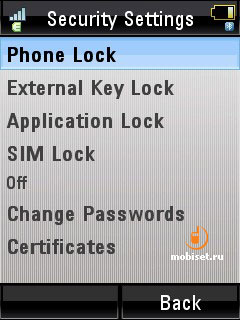
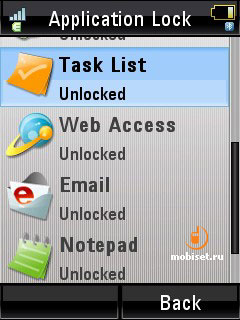
Talking phone
One of the most interesting functions, that the MOTO U9 can boast with, is the voice control. The phone is capable to recognize dozens of commands regardless of the speaker’s voice. With the help of the voice commands you can call up any contact, dictate a phone number, audio profile, learn about missed calls and new messages, check the time and start any application. You don’t need any practice or any function study, as the device accurately recognizes the commands regardless of the background noises. The application is of a great value, as this way of control is almost inevitable when driving a car. But it is not all for the U9 voice capabilities; besides the voice recognition, the phone is also able to “speak”. The function can be utilized to read the names of the menu items, numbers when calling a contact and an answer the voice commands (e.g. when you pronounce a contact name, the handset repeats it and asks for confirmation. If a contact has several phone numbers, the phone asks to say the number type). But the vendor hasn’t restricted himself with it, and made the handset to read aloud SMS and Email, and the phone does well with it.
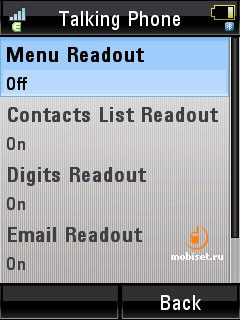
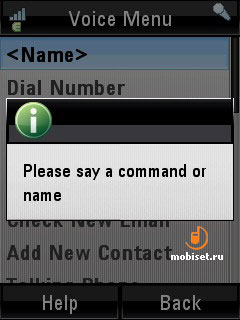
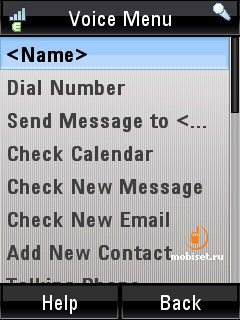
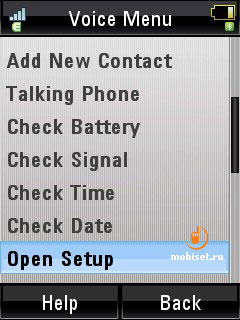
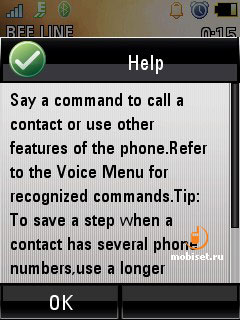
Calls
The call history is now available not only from the main menu, but also from the home screen – just press the green key ( when pressing it, the device used to come with the list of outgoing calls). All calls are sorted by categories (incoming, outgoing, missed, all and frequent); to navigate through them you can use the tabs locating in the top part of the screen. The latter filter comes in handy to call quickly the most frequently used contacts. There are two viewing modes – as a list of names and as a detailed list with a second line informing about date and time of a call. To get the more detailed information you have to press the chosen contact. The menu provides information about total call and network connections duration.
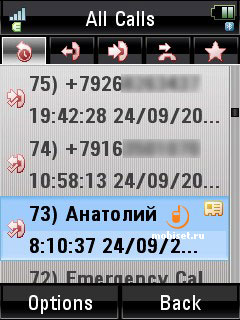
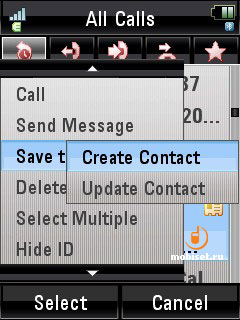
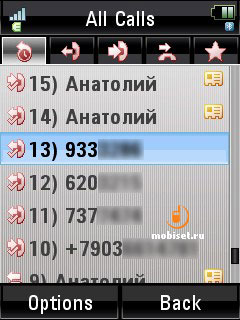
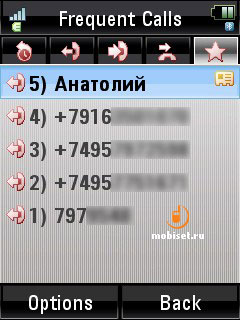
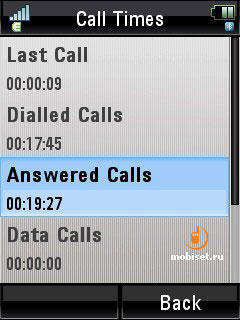
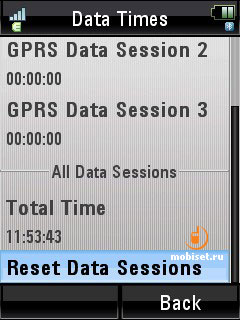
The maximal length of an entered number is 41 symbols; the entered numbers are arranged in three lines. When the incoming call, the picture of the contact aren’t for unknown reason displayed on the internal screen; you see only current time, a contact’s name and a sign of the incoming call. If the flip is opened, the picture occupies three fourths of the main screen. There is no problem with balance checking on the short numbers starting with the asterix, the net USSD-services works well. You get access to SIM-card applications (e.g. “beeinfo” and “MTS-info”)from the folder “Organizer” in the main menu, there are also no complaints about their work.
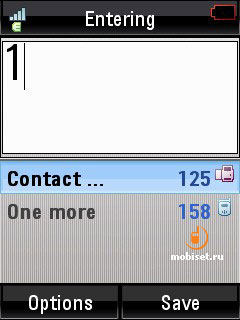
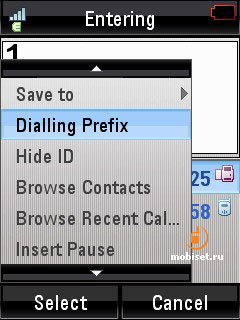
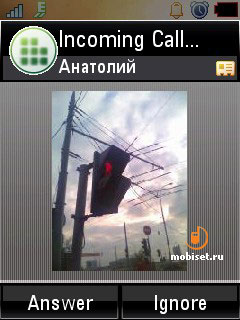
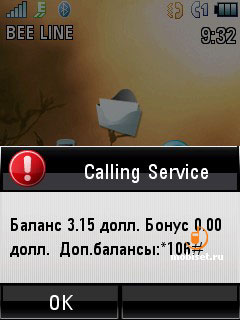

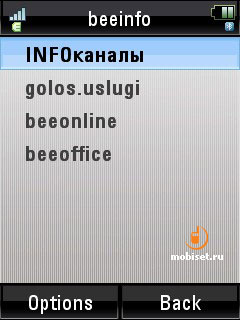

Conclusion
The reception quality doesn’t make the MOTO U9 stand out from the modern phones; but the sound quality during the talks surprised us. This perfect result is achieved by using the modern Crystal Talk technology, which automatically adjusts audio to help ensure clear calls even in the noisy environments.The main loudspeaker is good enough for you not to be afraid of missing a call. The vibrate ring is better than the average one.
In the conditions of the Moscow networks the device lasts almost two days at the average using (up to 40 minutes of talks, several SMS, up to two hour of web-surfing, about an hour in the playing back mode). With the more active usage of the phone, the life period of the battery shortens to one day. In the playing back mode the battery charge is enough to 10 hours, the result is not perfect to the music phone. The MOTO U9 leaves very pleasant impression. It is compact, quick, nice, functional – very seldom these qualities can be met in one phone. The work with a device is very convenient – it concerns both the interface, software and the ergonomics in combination with the high-quality materials. The uncommon disappearing external display and the touch sensitive navigational keys to control player make the U9 more interesting. For that matter the device has no direct competitors. As far as the design the main competitor may be the Sony Ericsson Z610i (though it is very disputable). As far as the positioning the MOTO U9 has to face the rivalry with the Nokia image devices in the middle price bracket. At the same time the aforementioned devices are behind the U9 regarding the music capabilities, as the sound quality of the PEBL descendant is very admirable. However the new clamshell has large shortcomings, they are as follows: the lack of the hot swap of the memory card and radio (which could be very valuable in the music phone), the average battery life and the poor camera quality. The phone is to come on the market close to the New Year. The approximate retail price will be about $400-450.
© Written by Alexei Ivanov, Mobiset.ru
Translated by Arina Urban.
Published — 14 November 2007